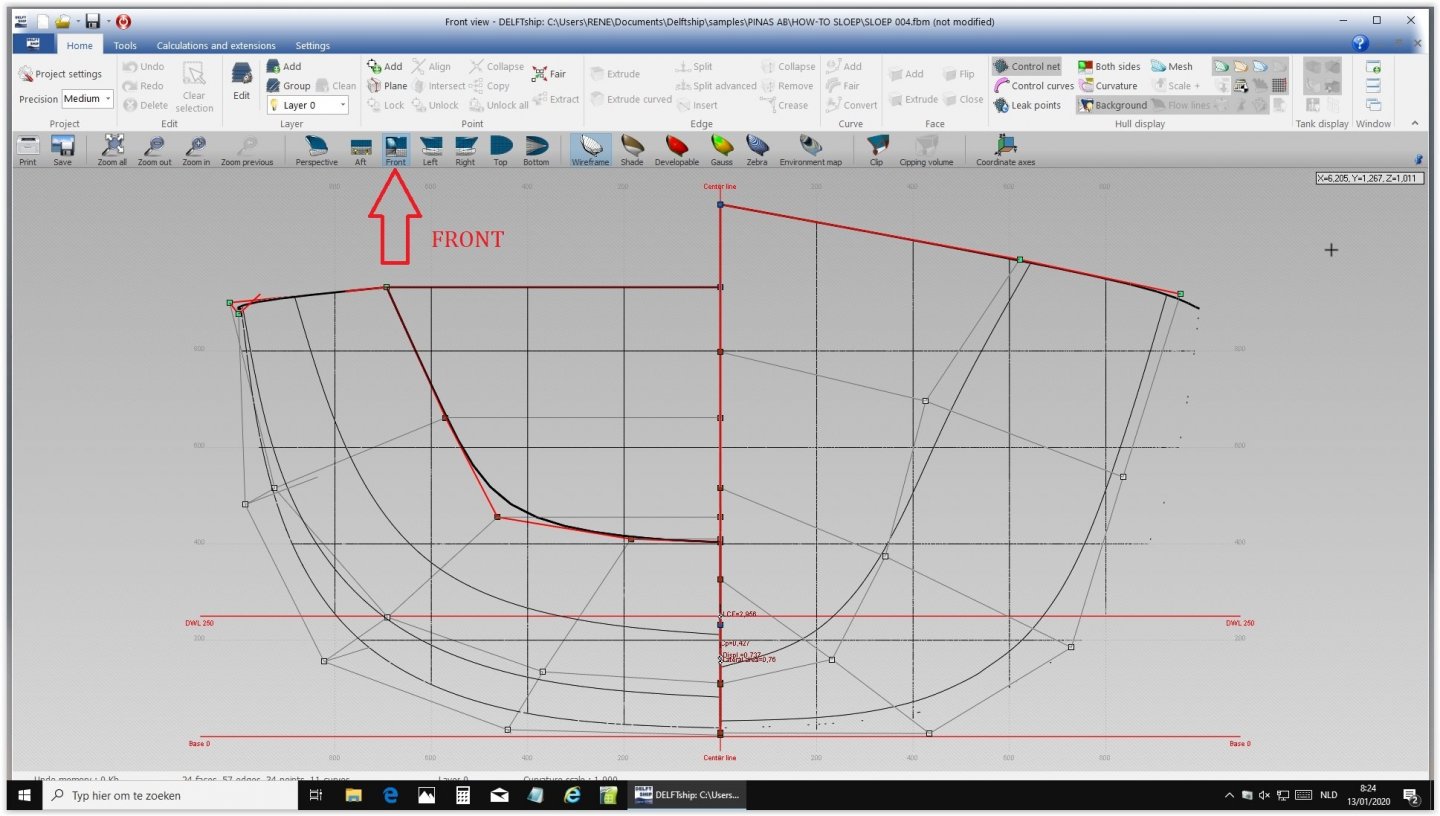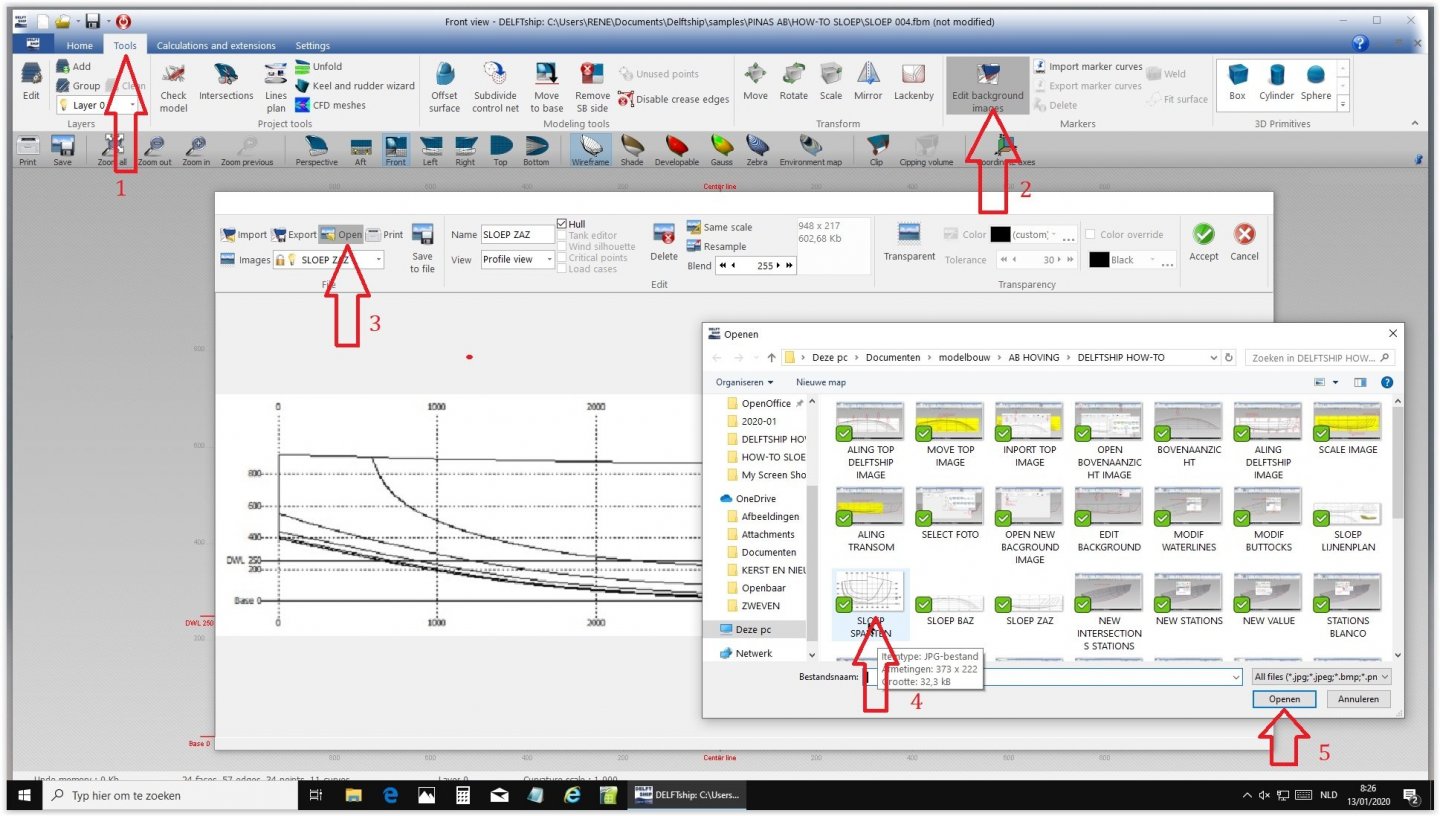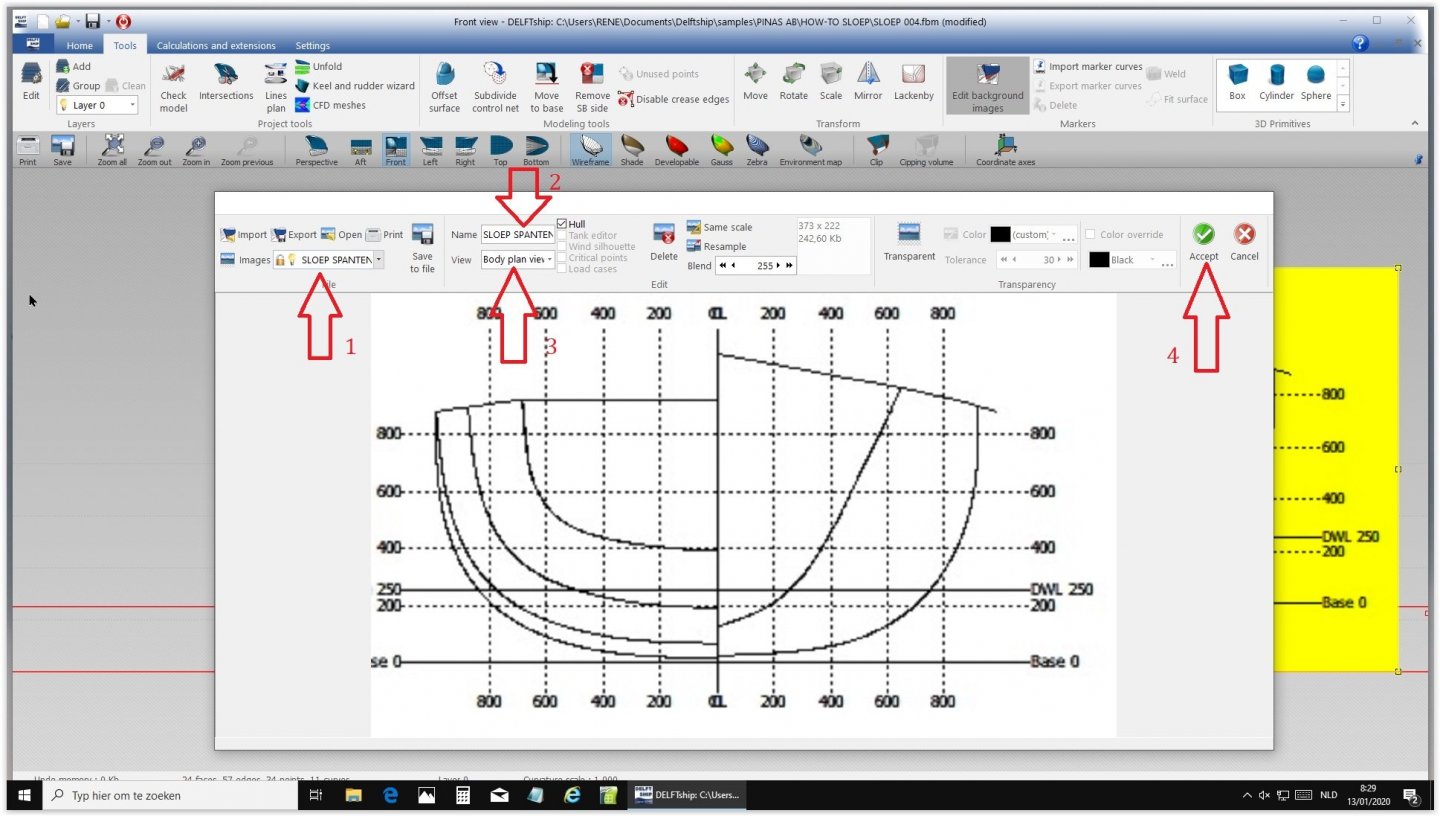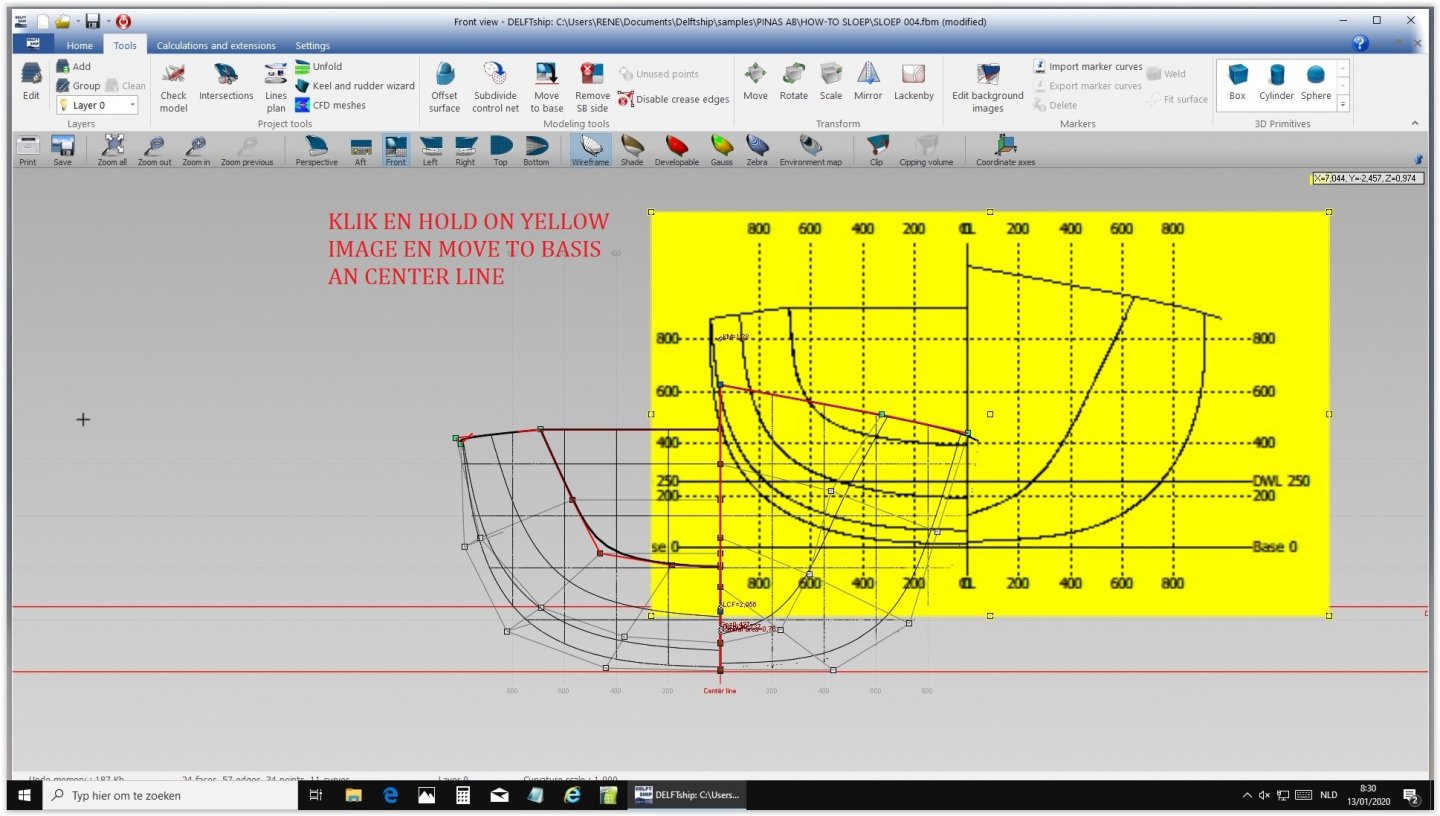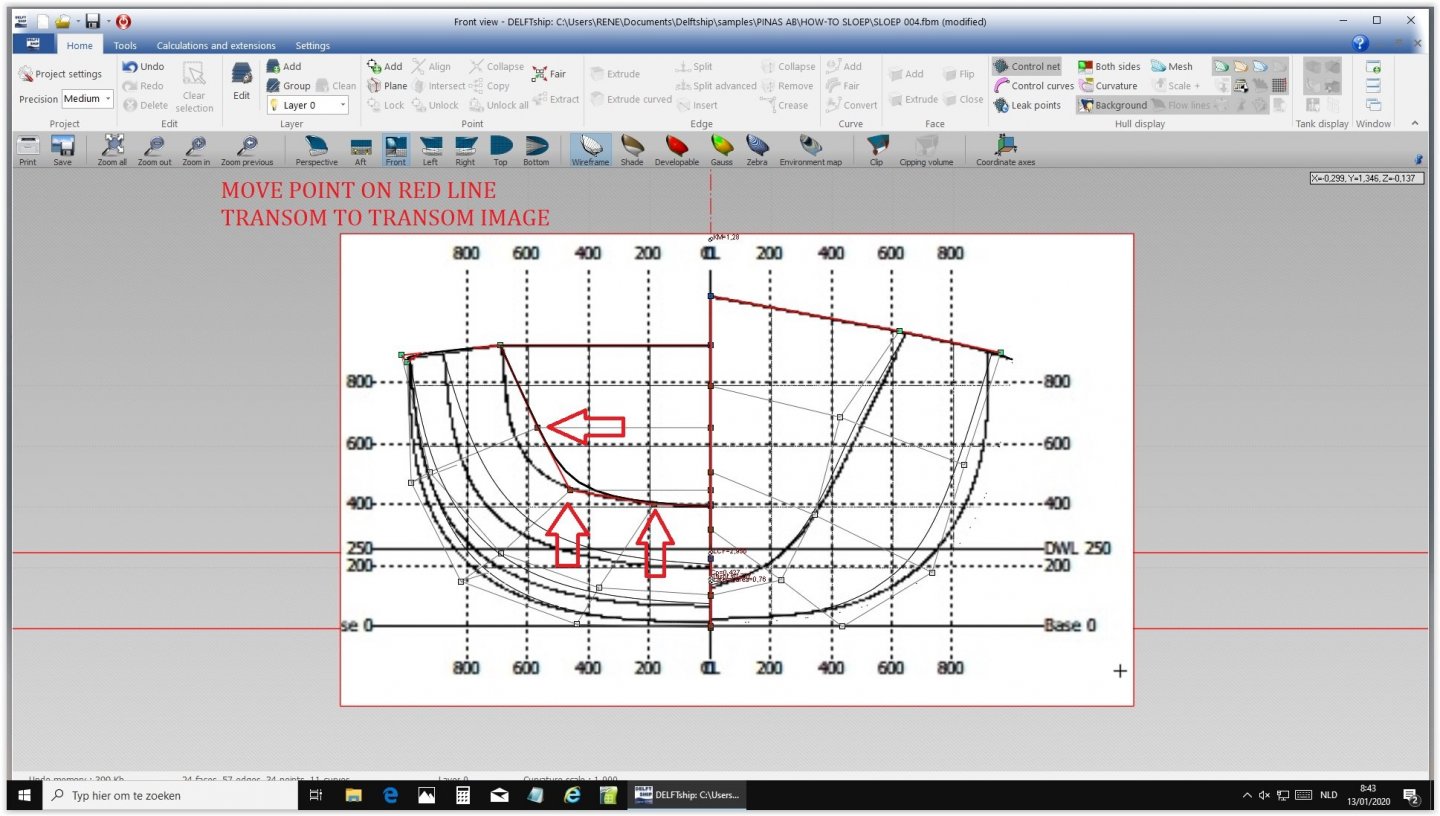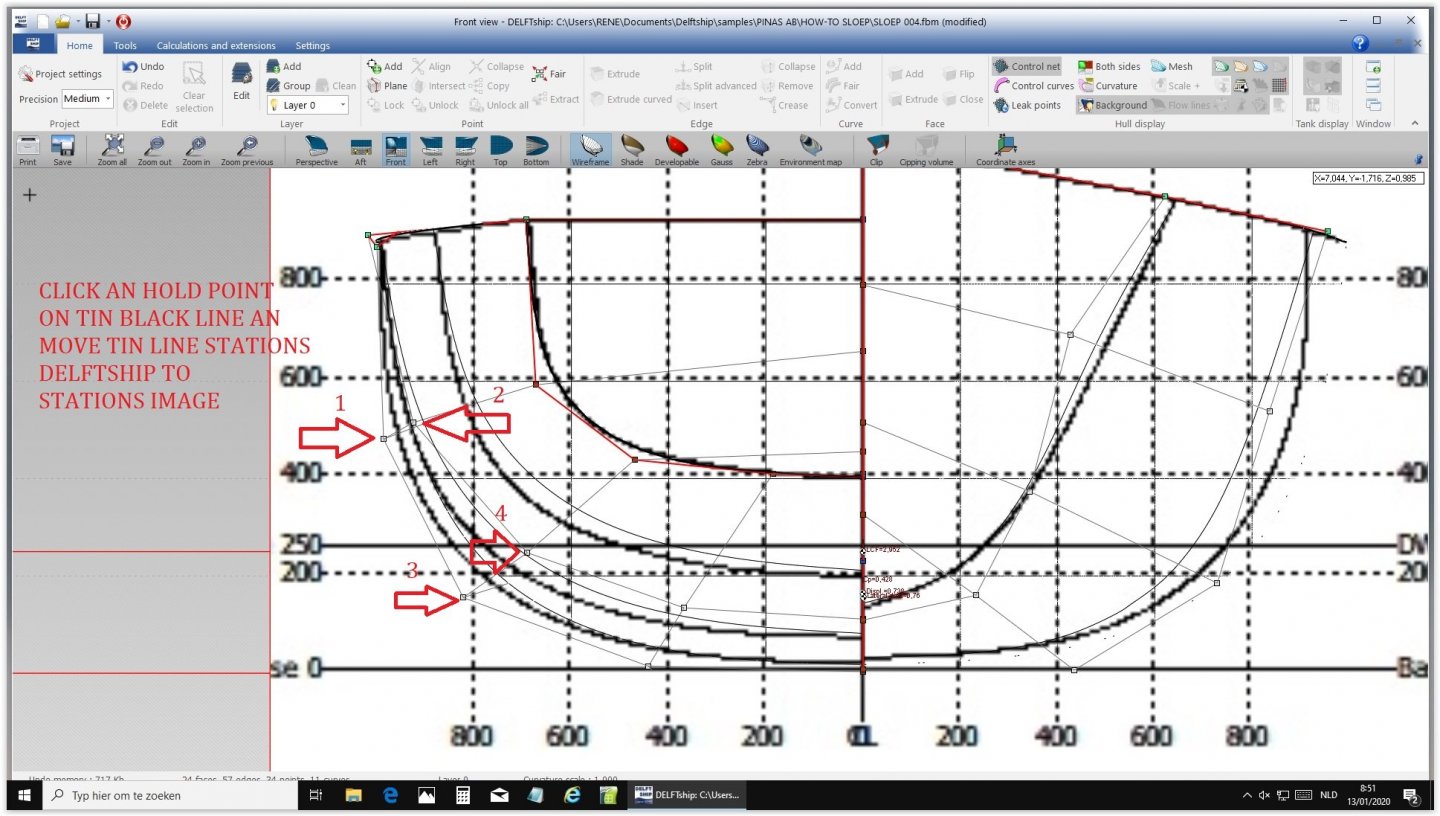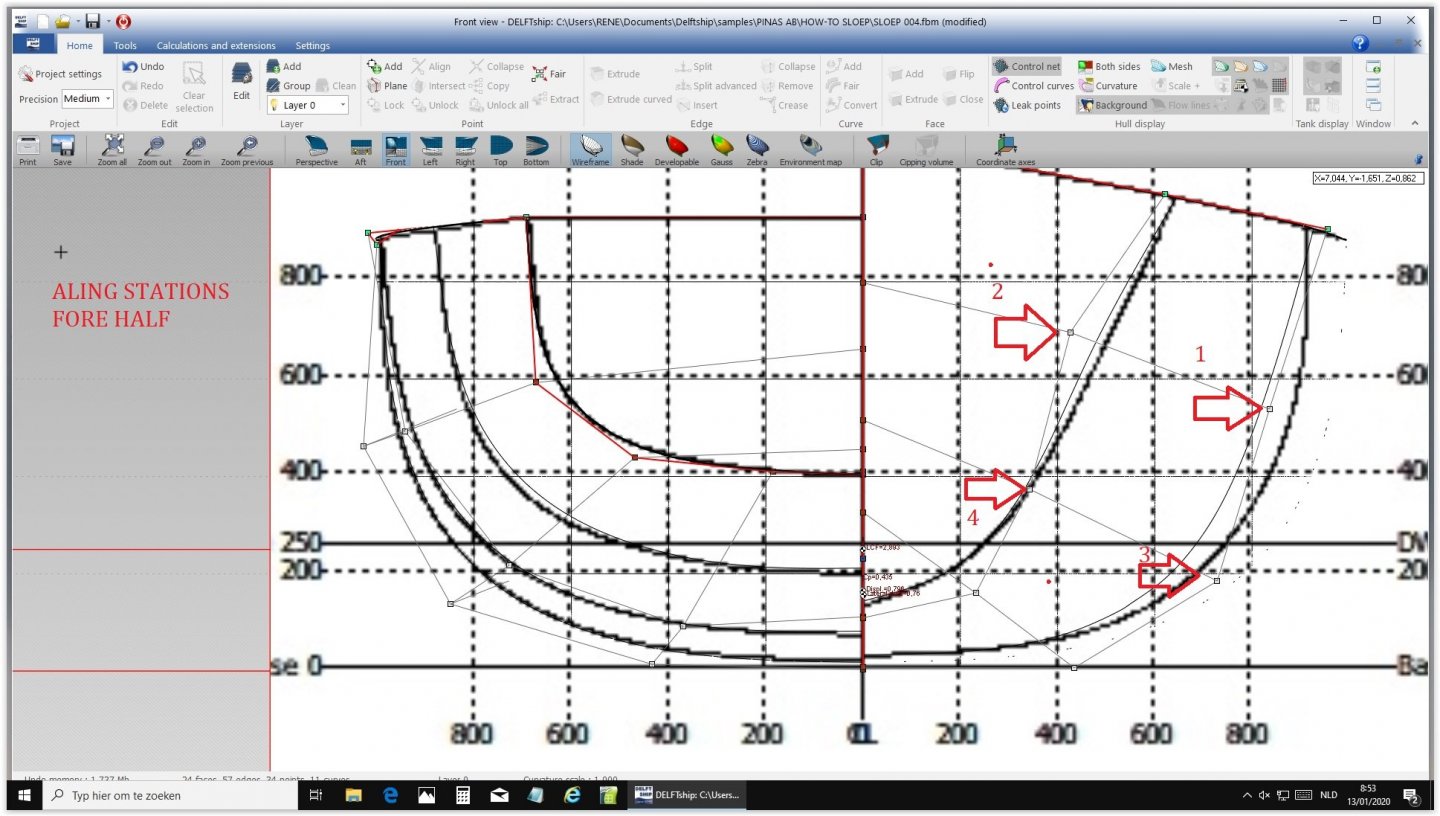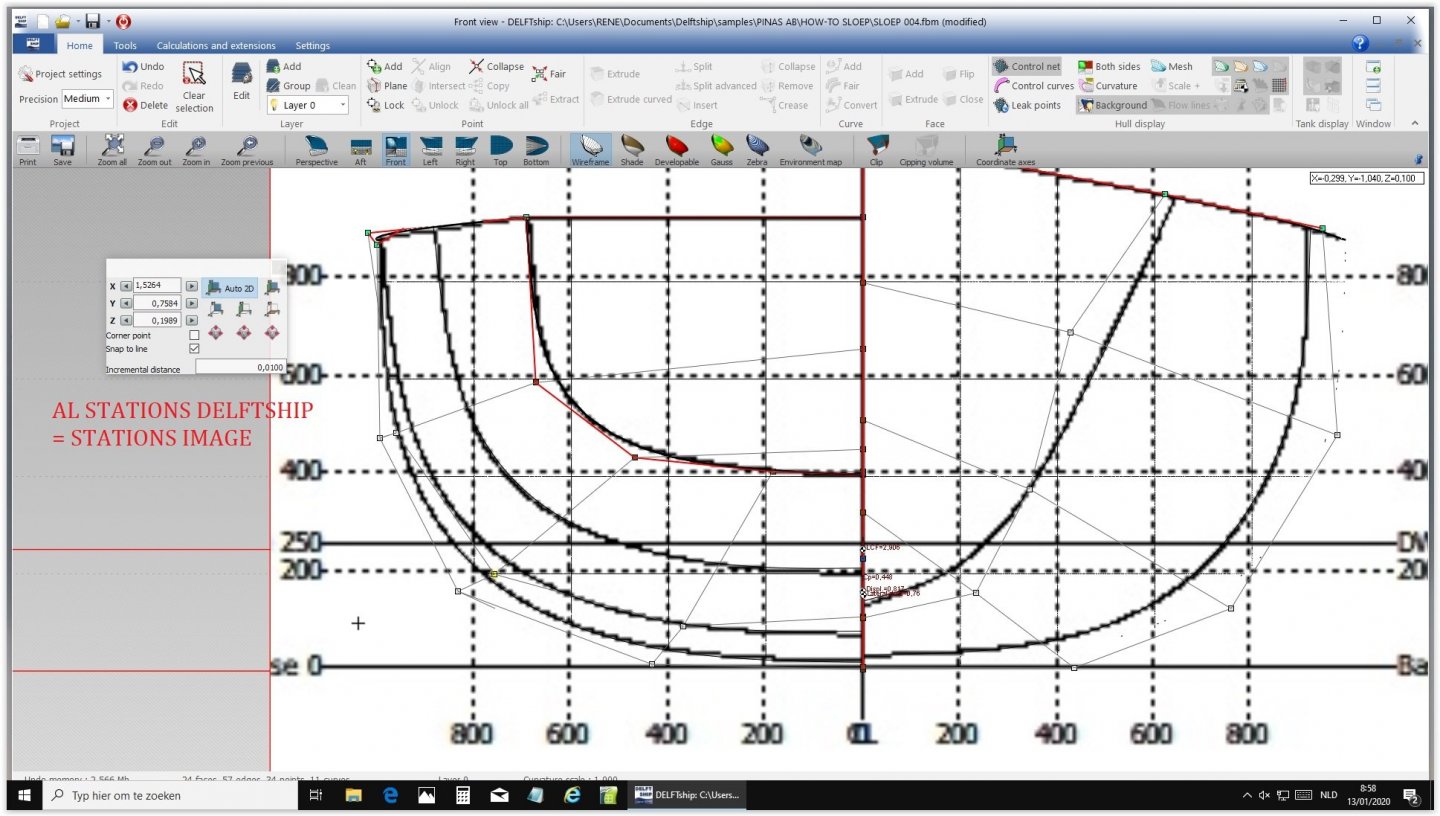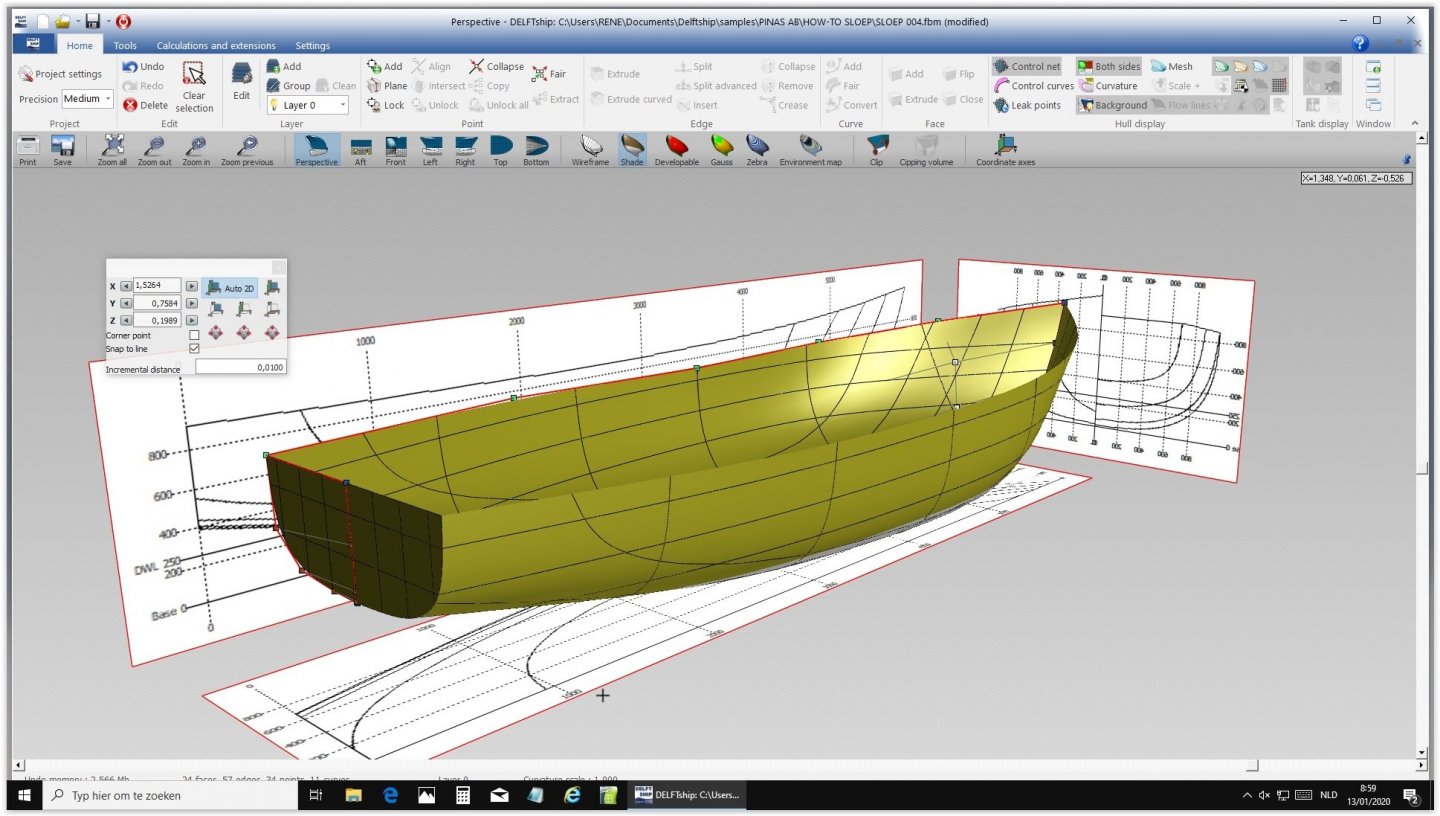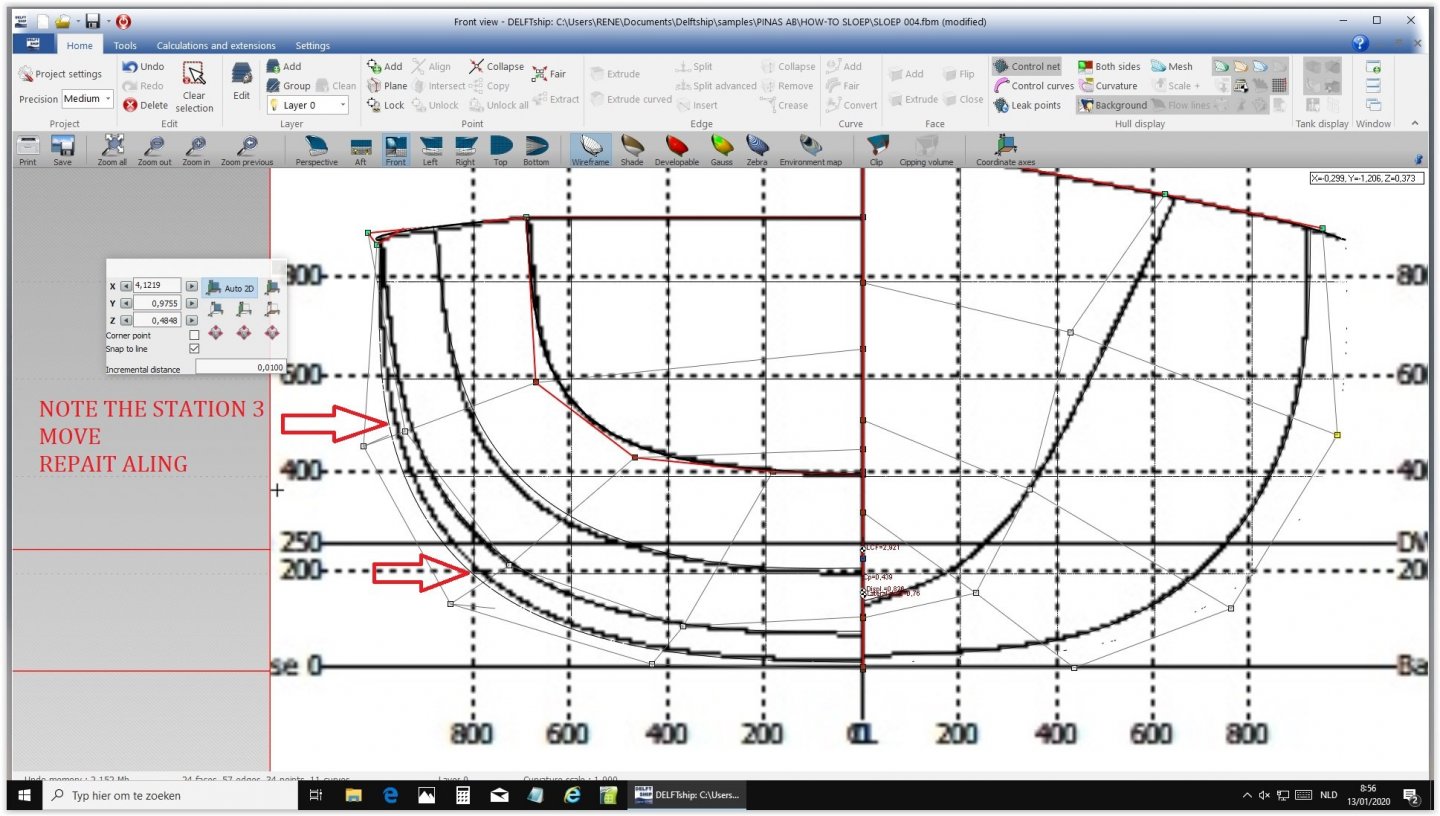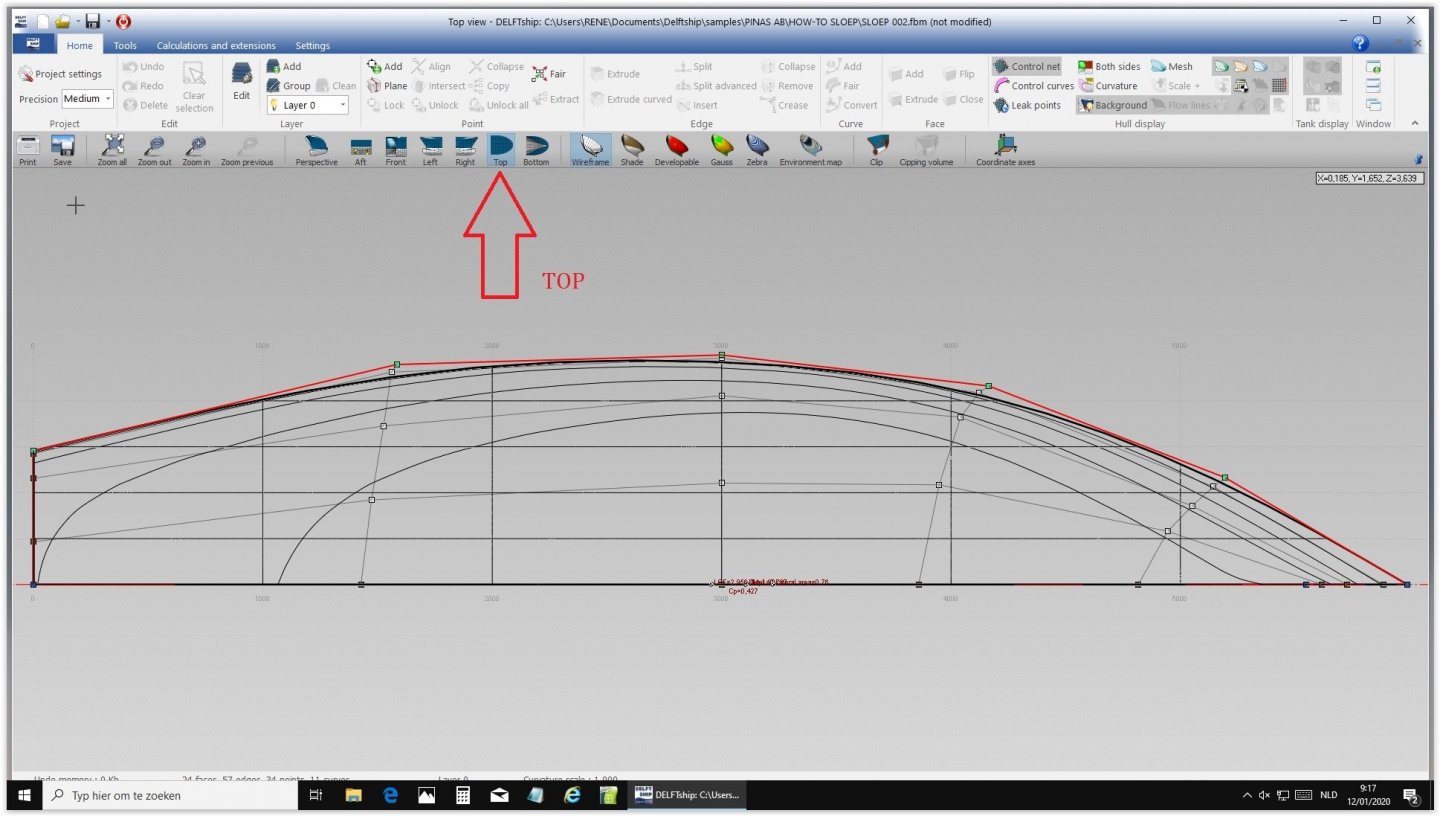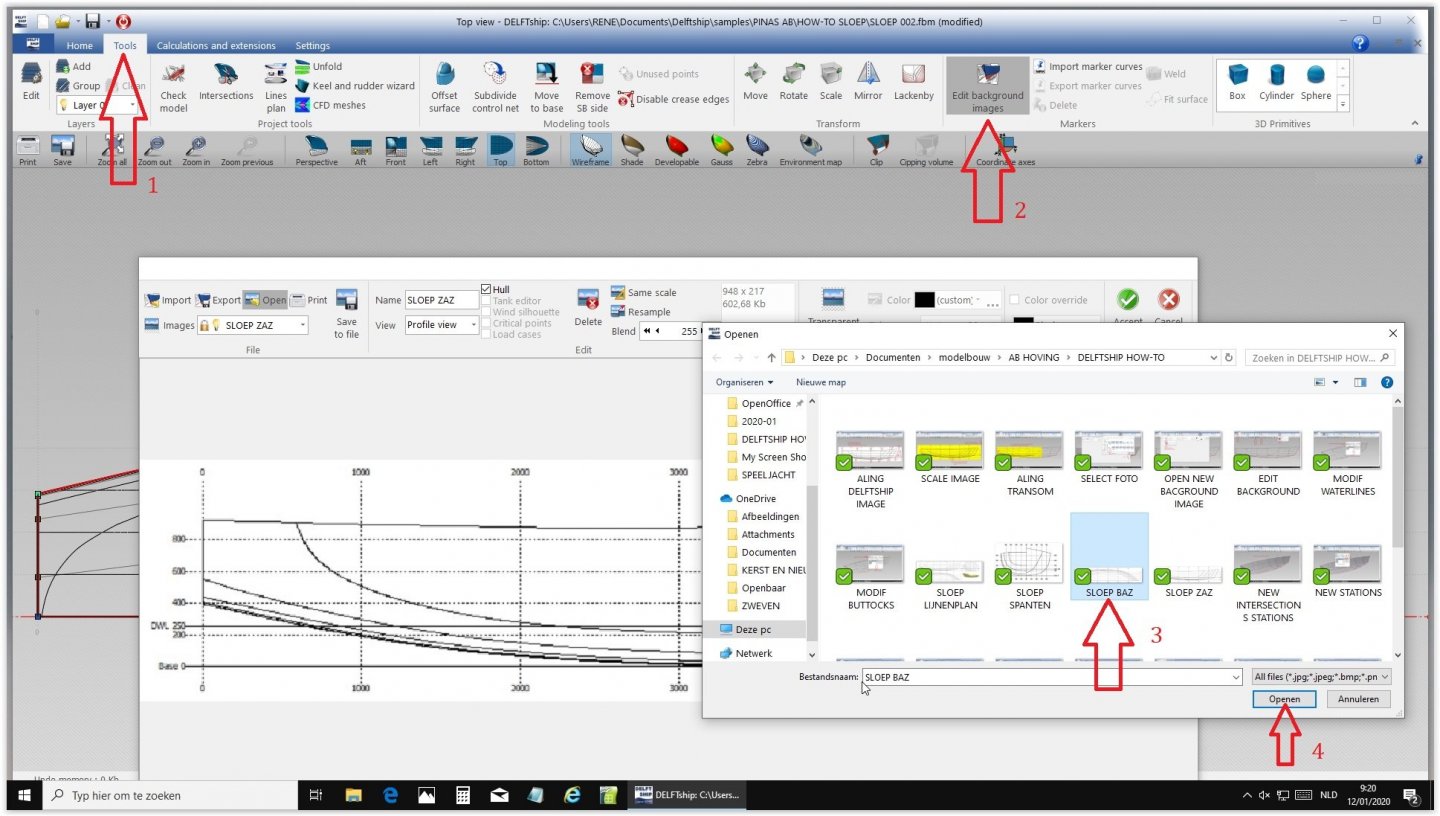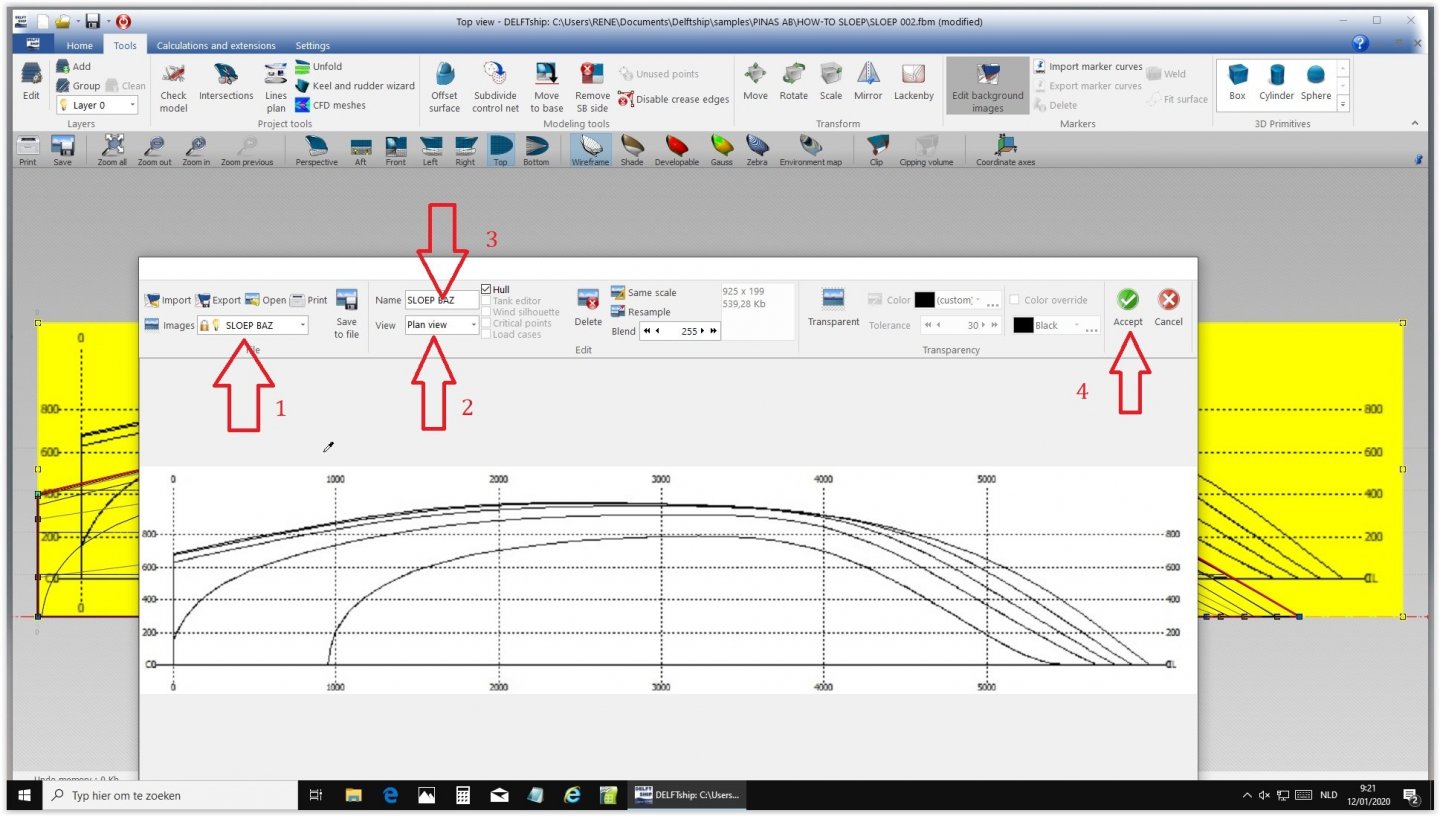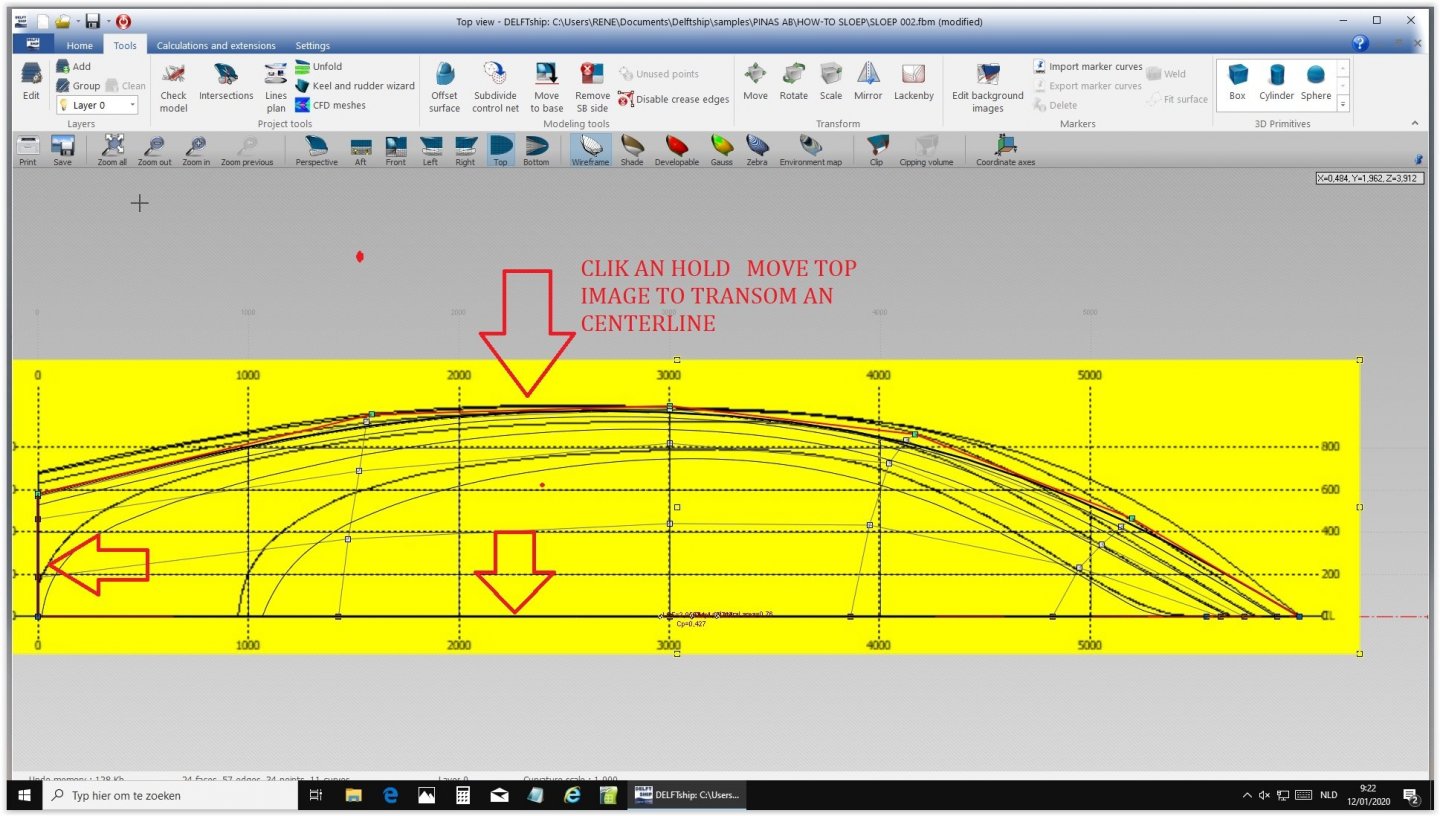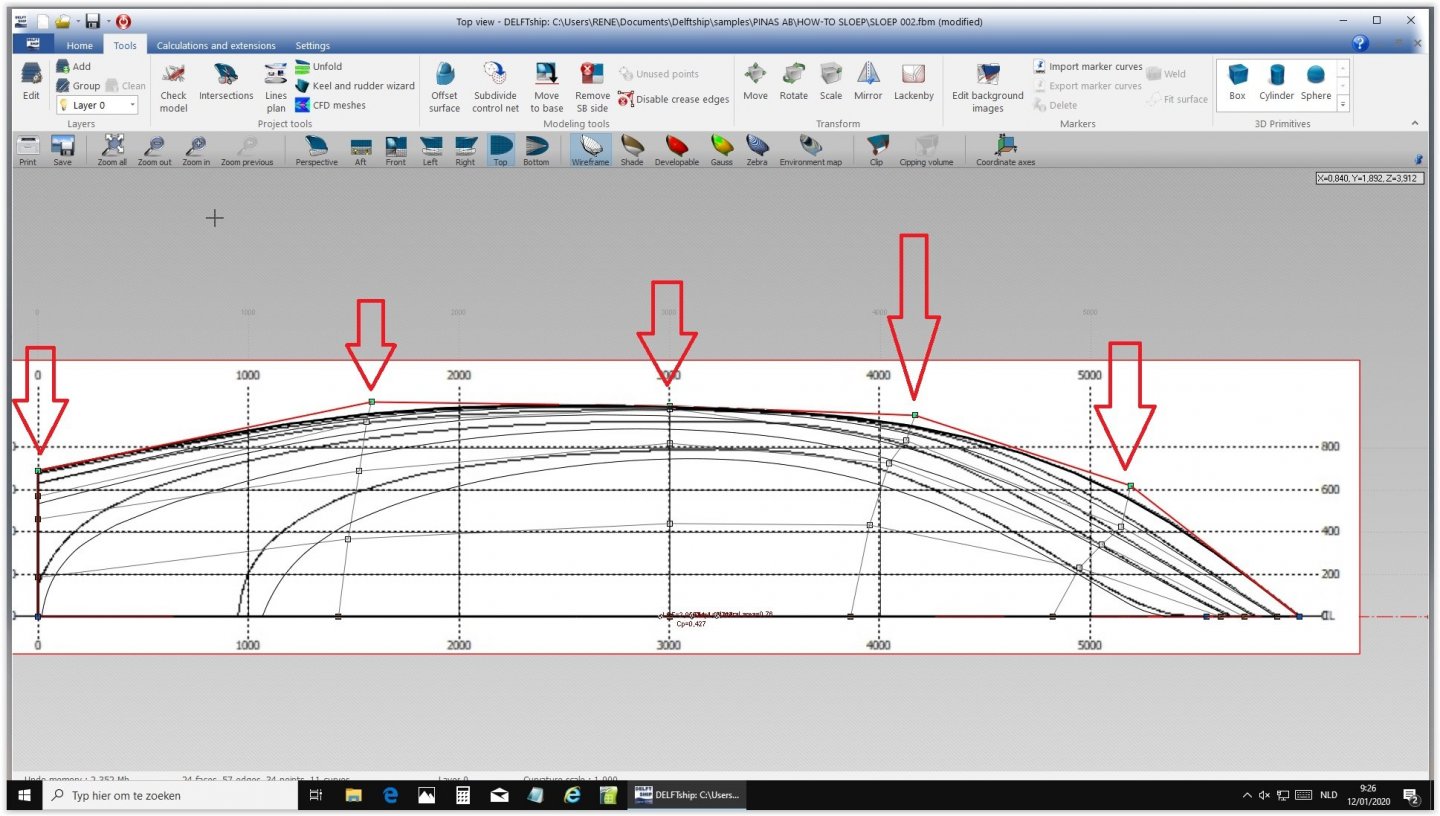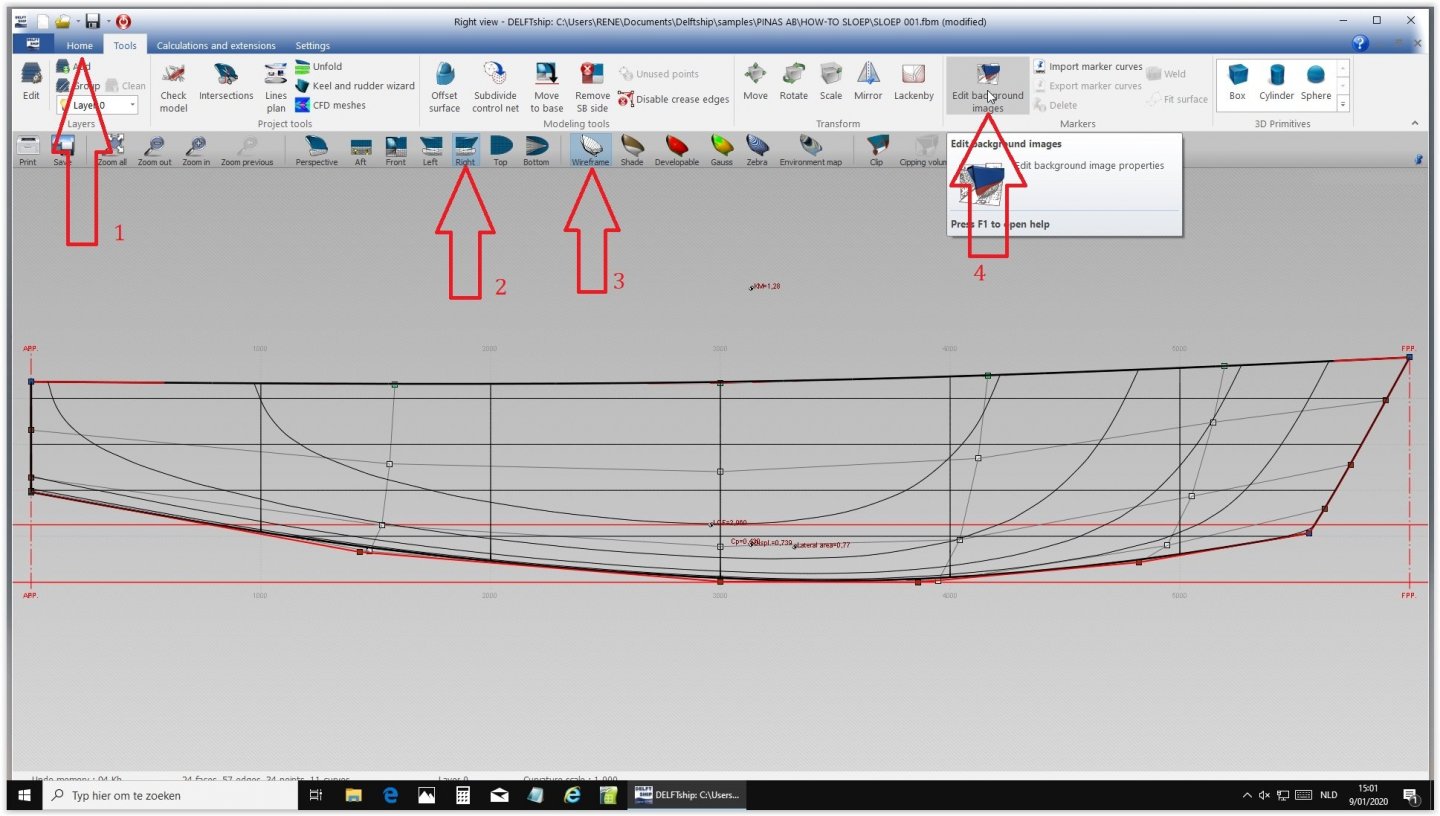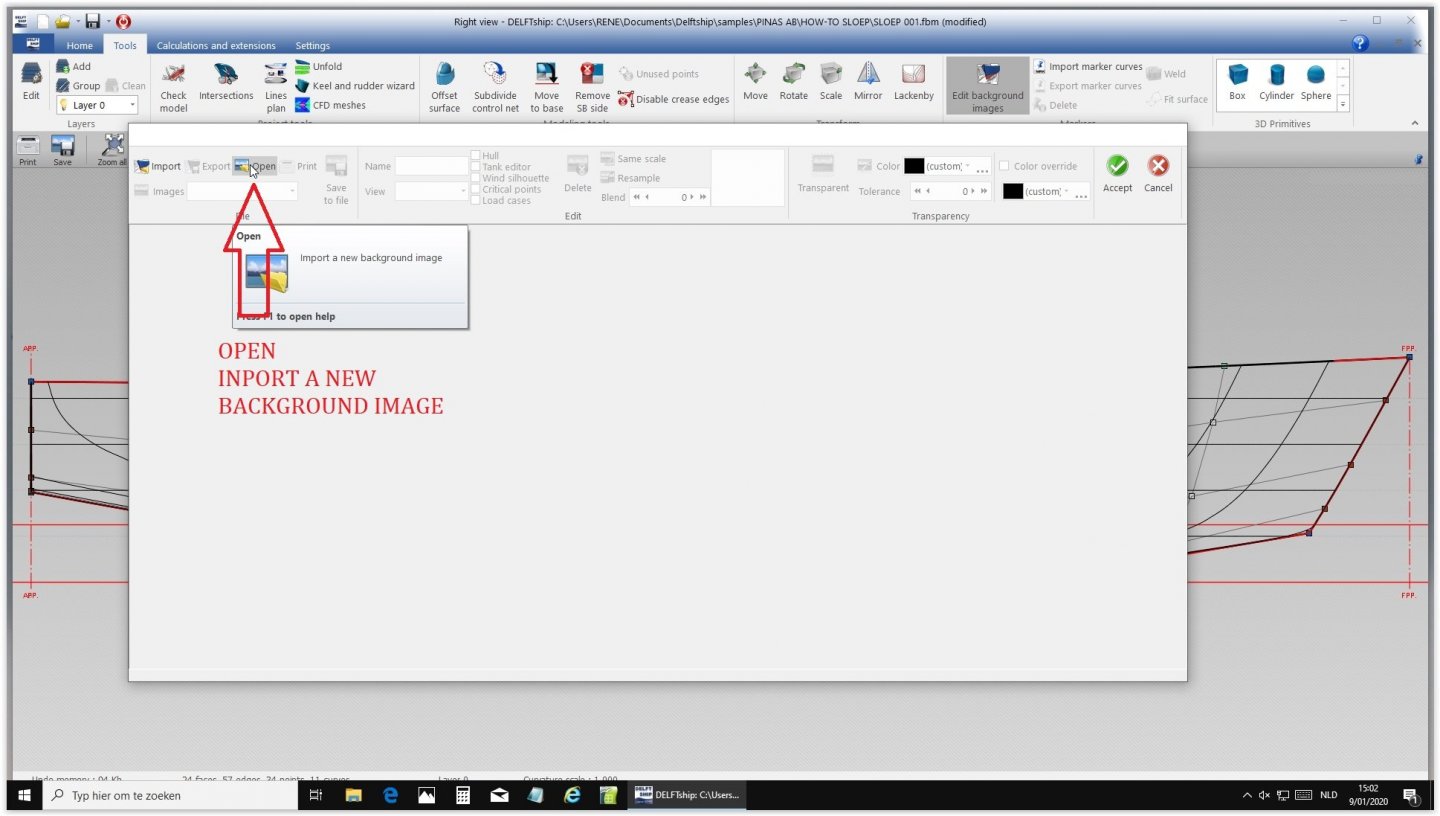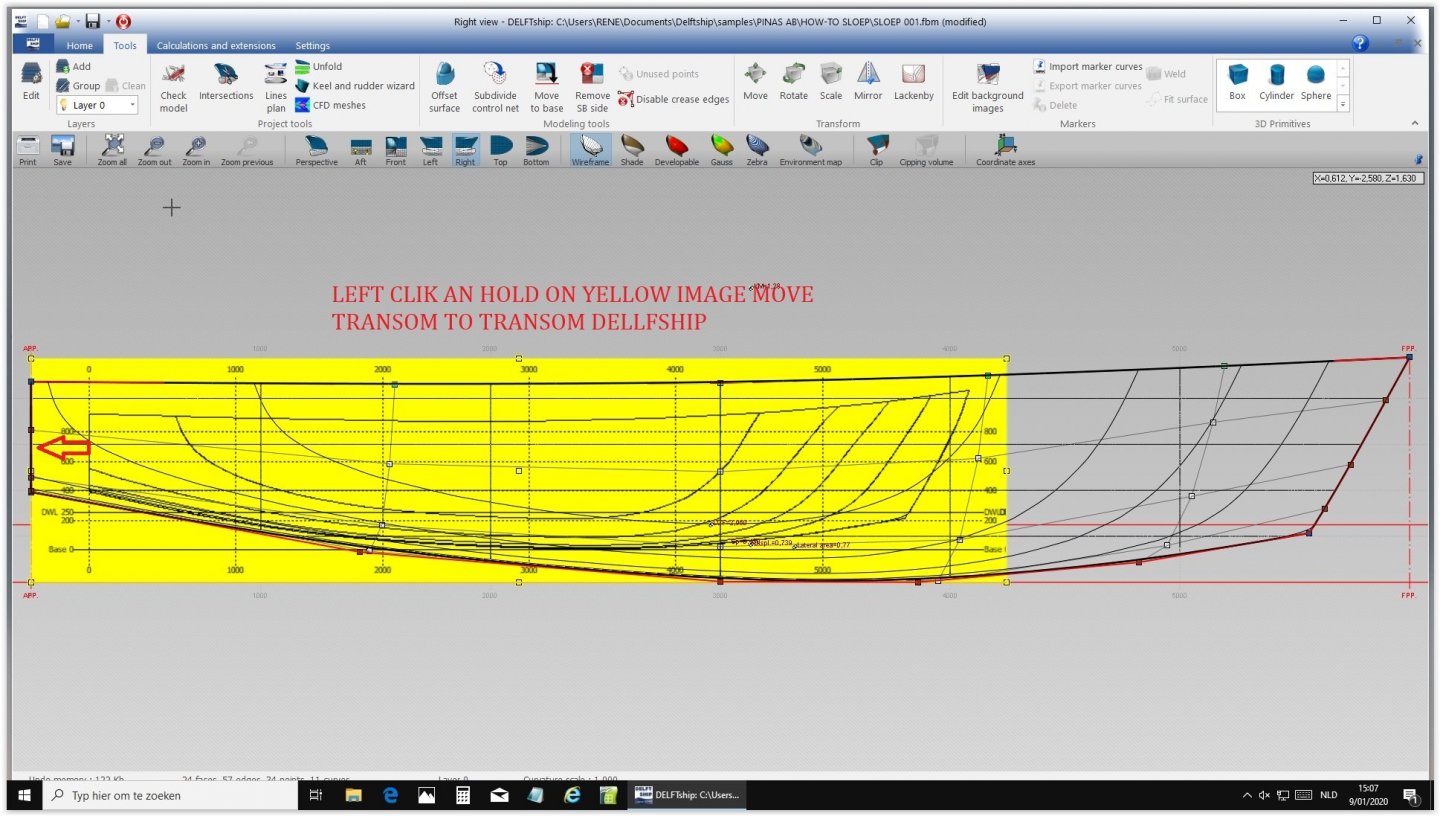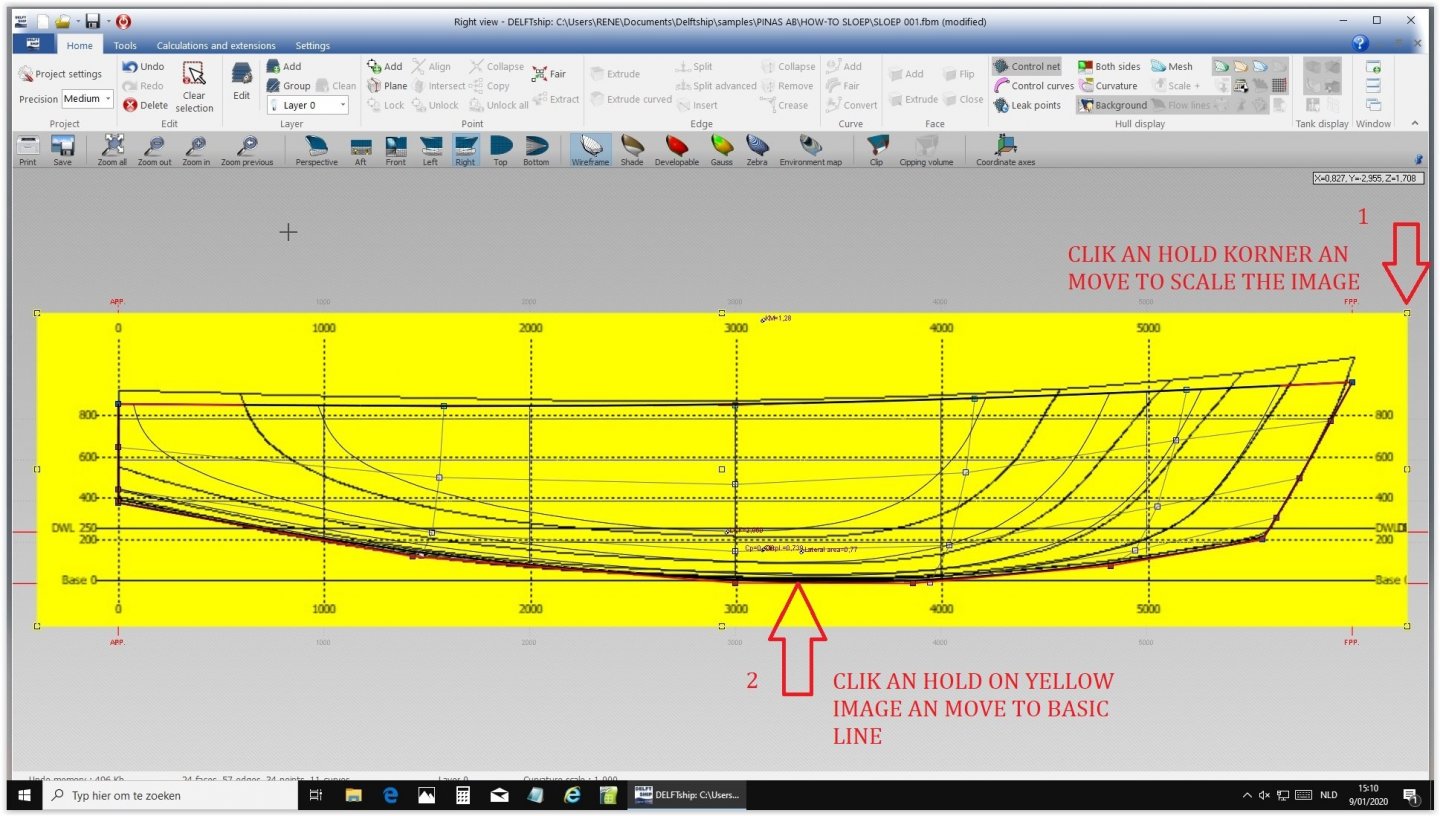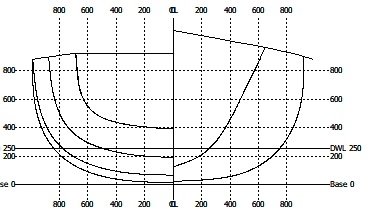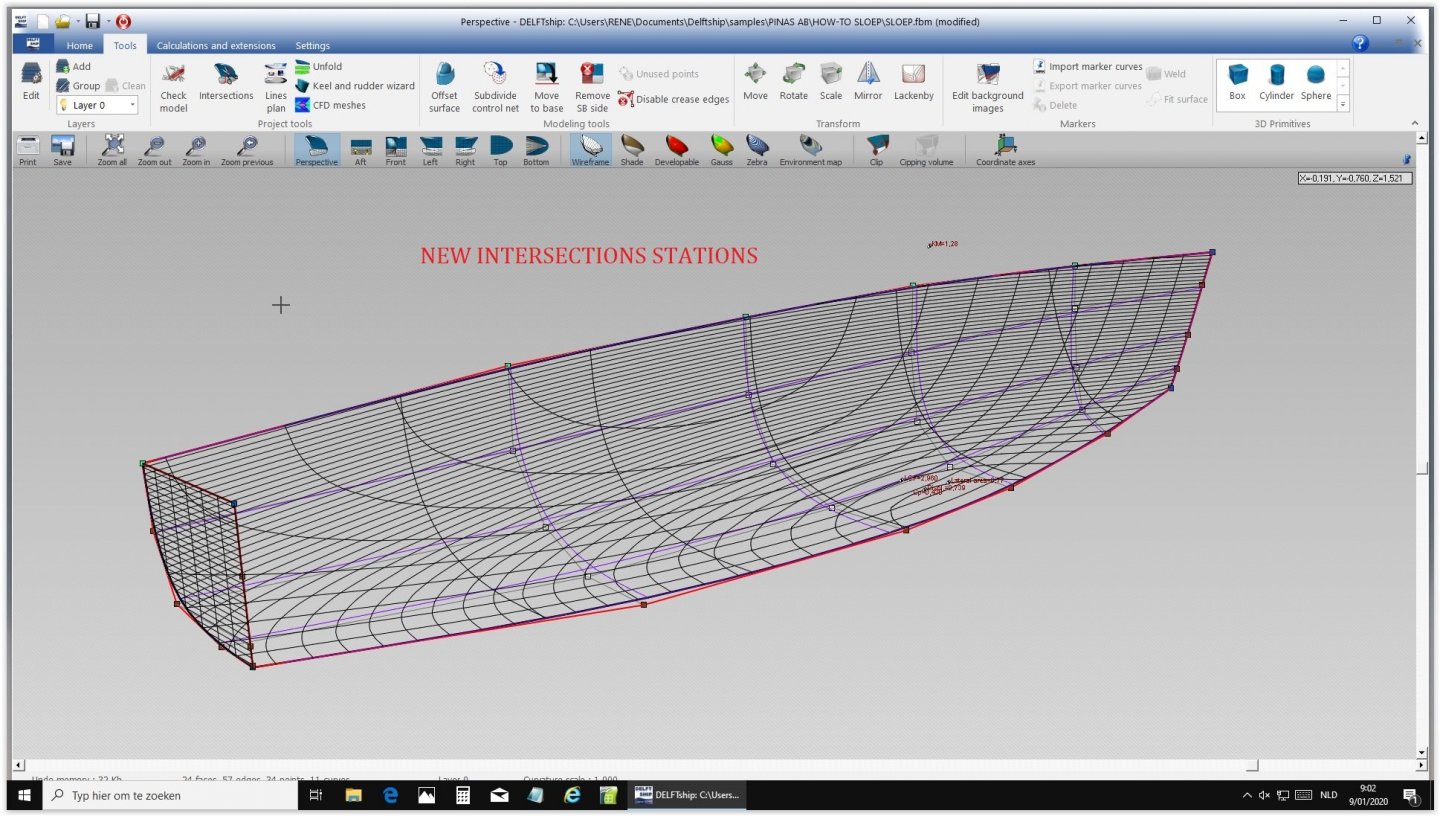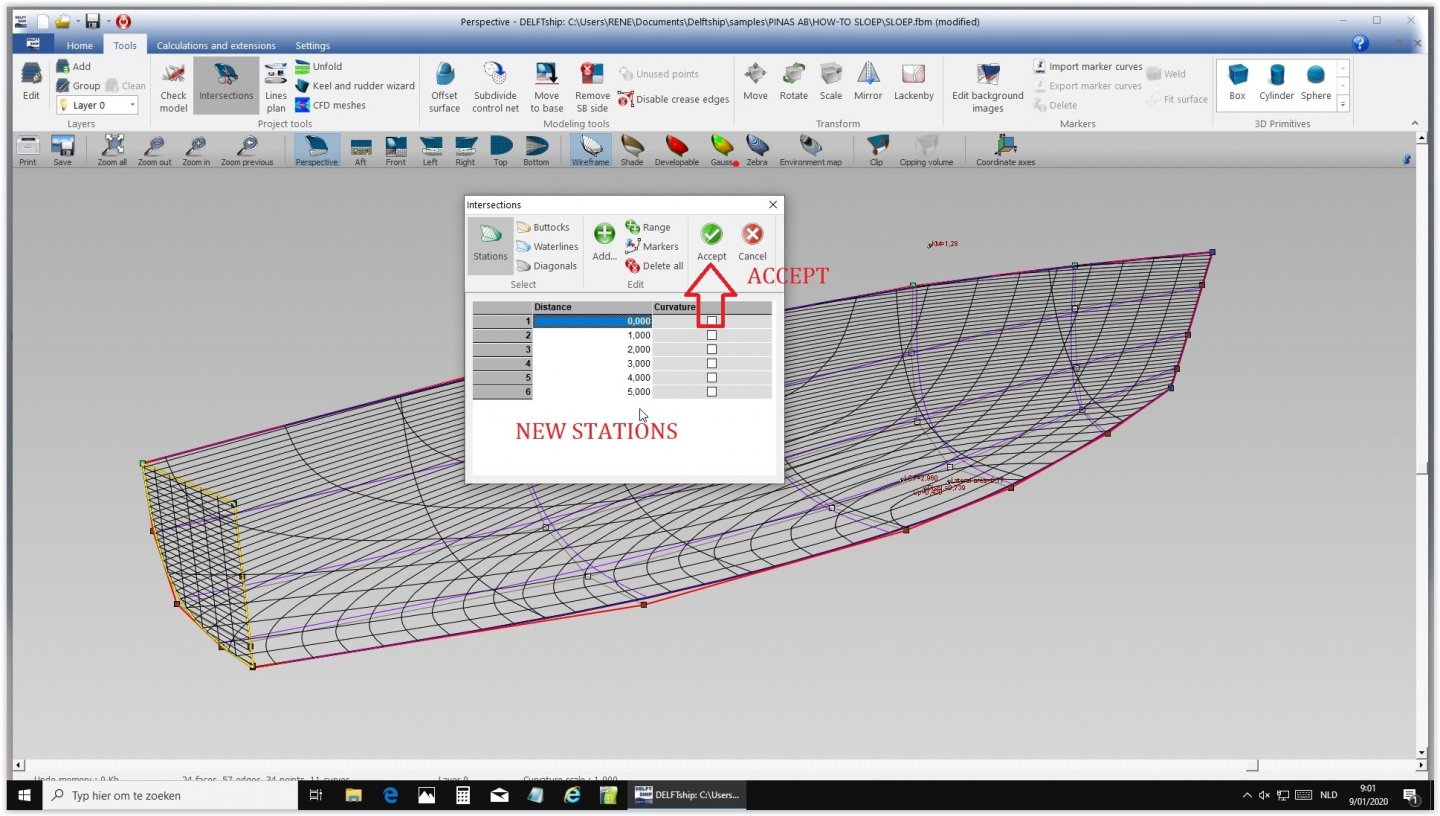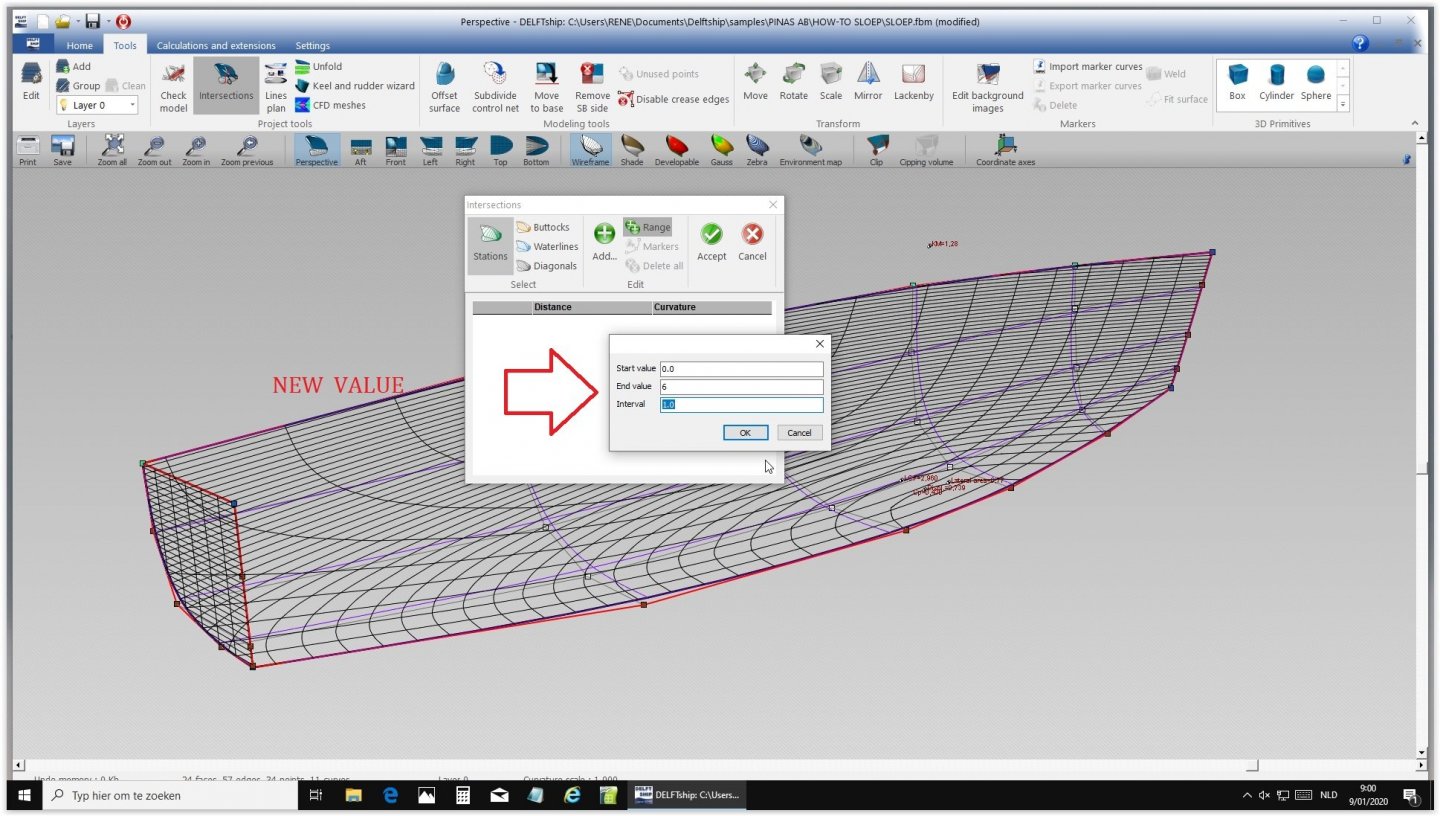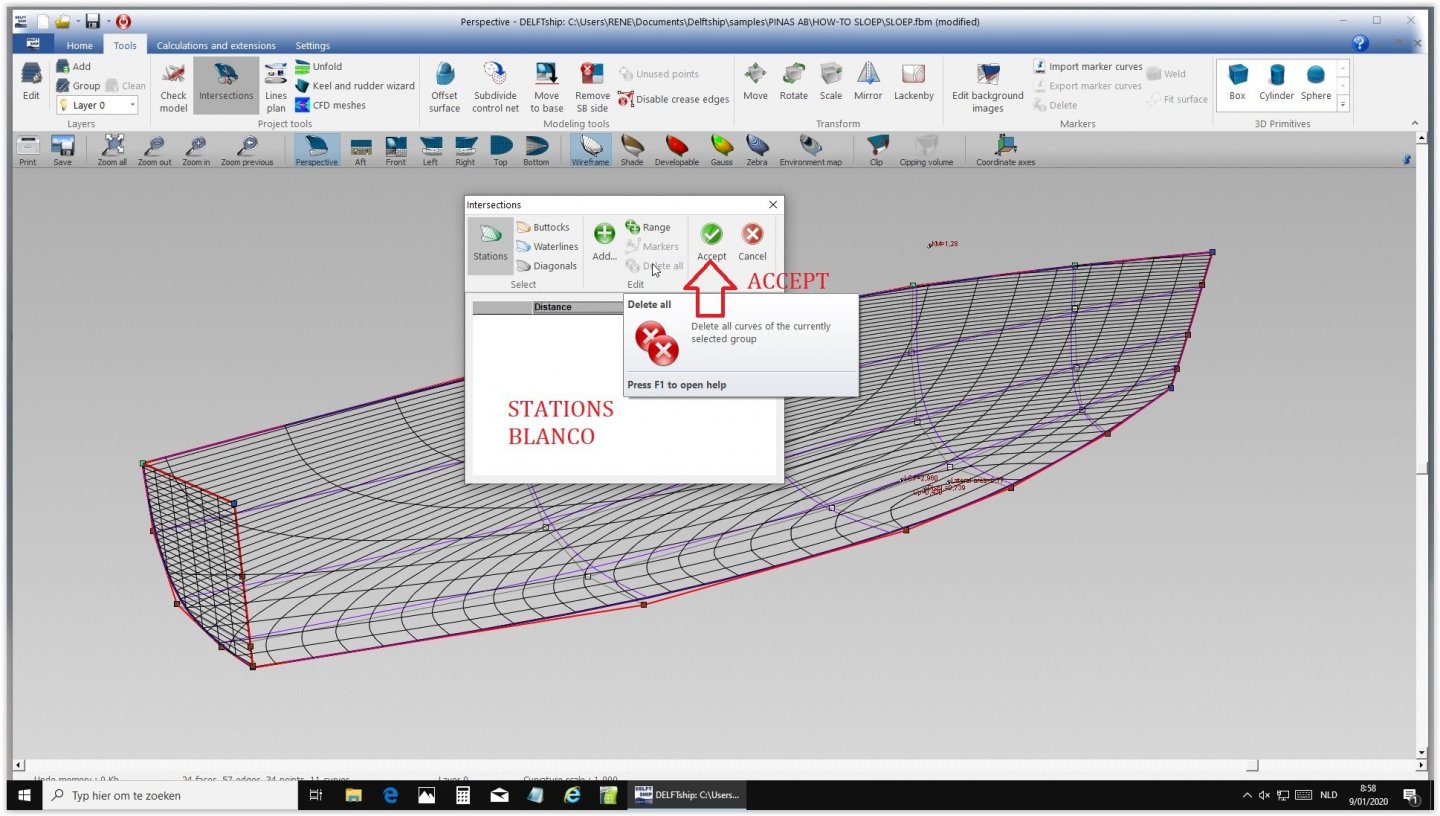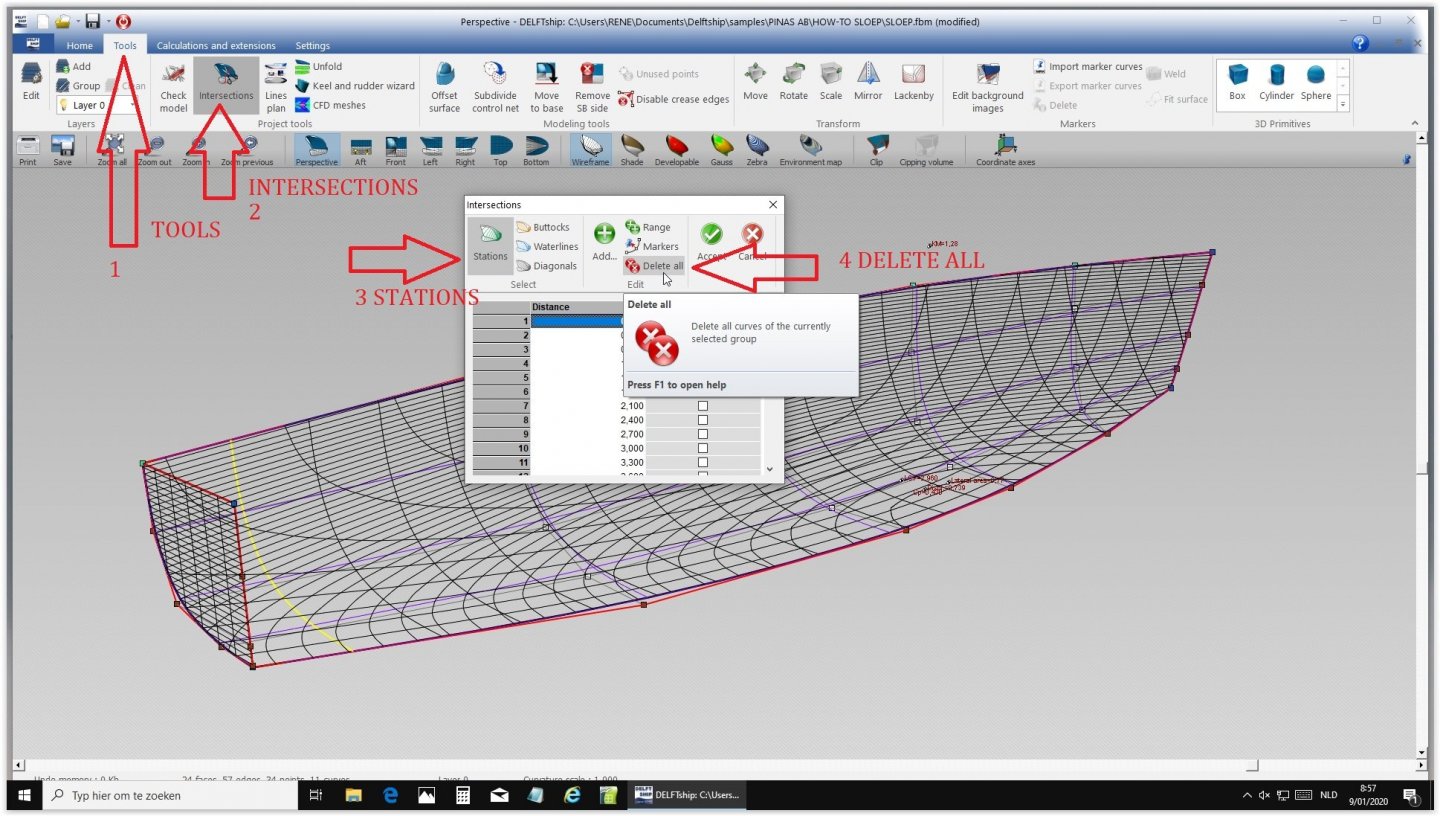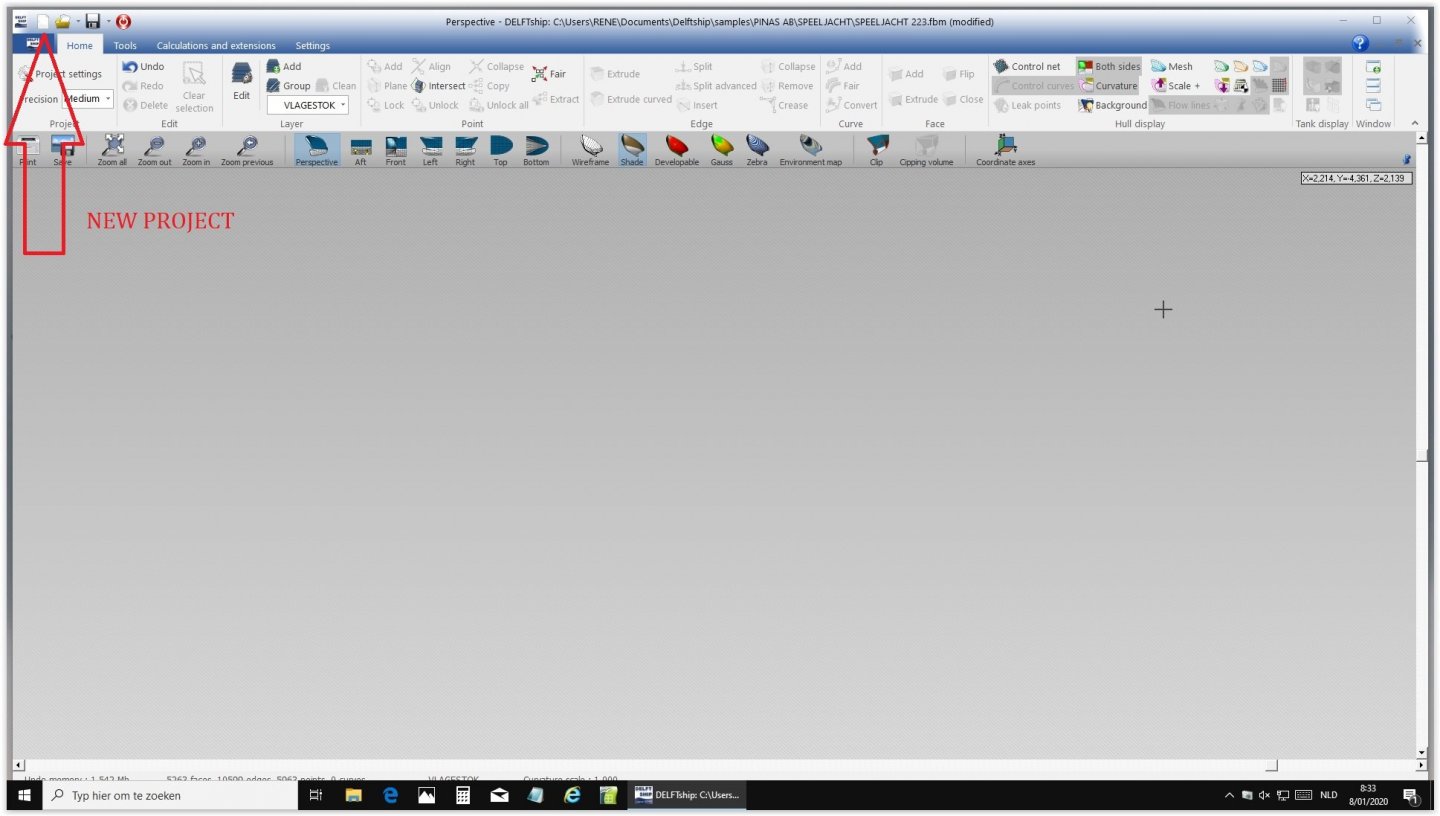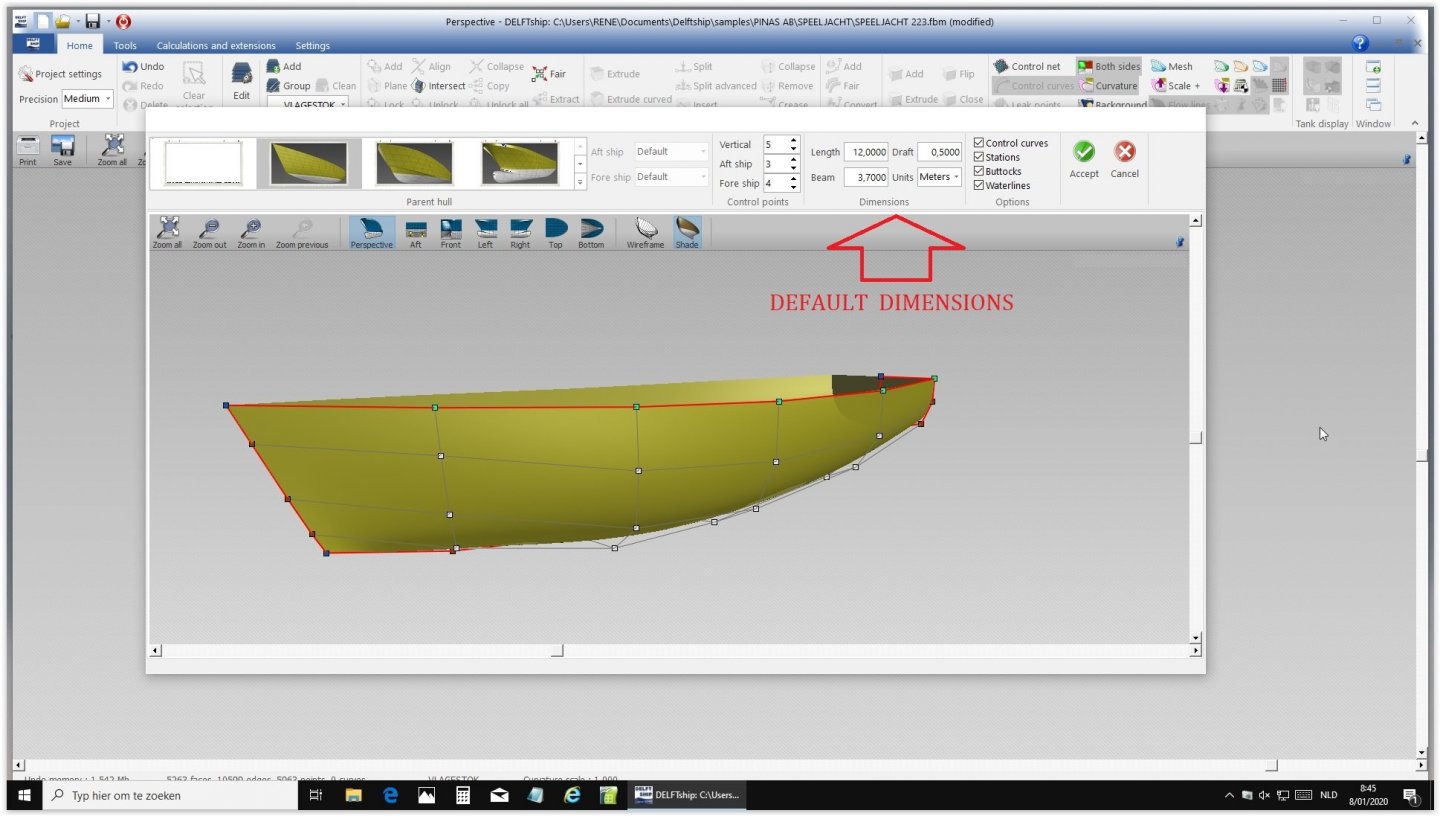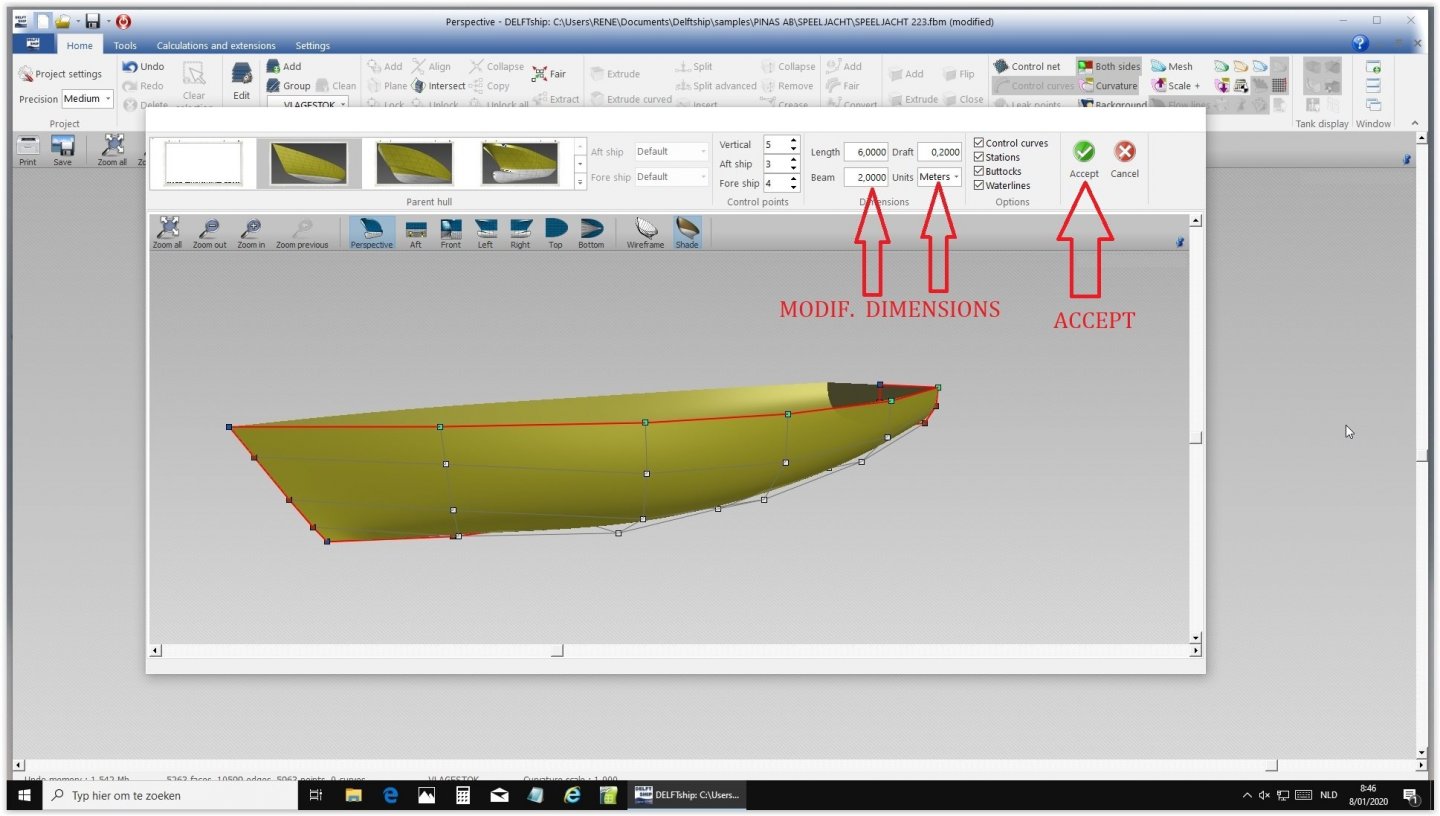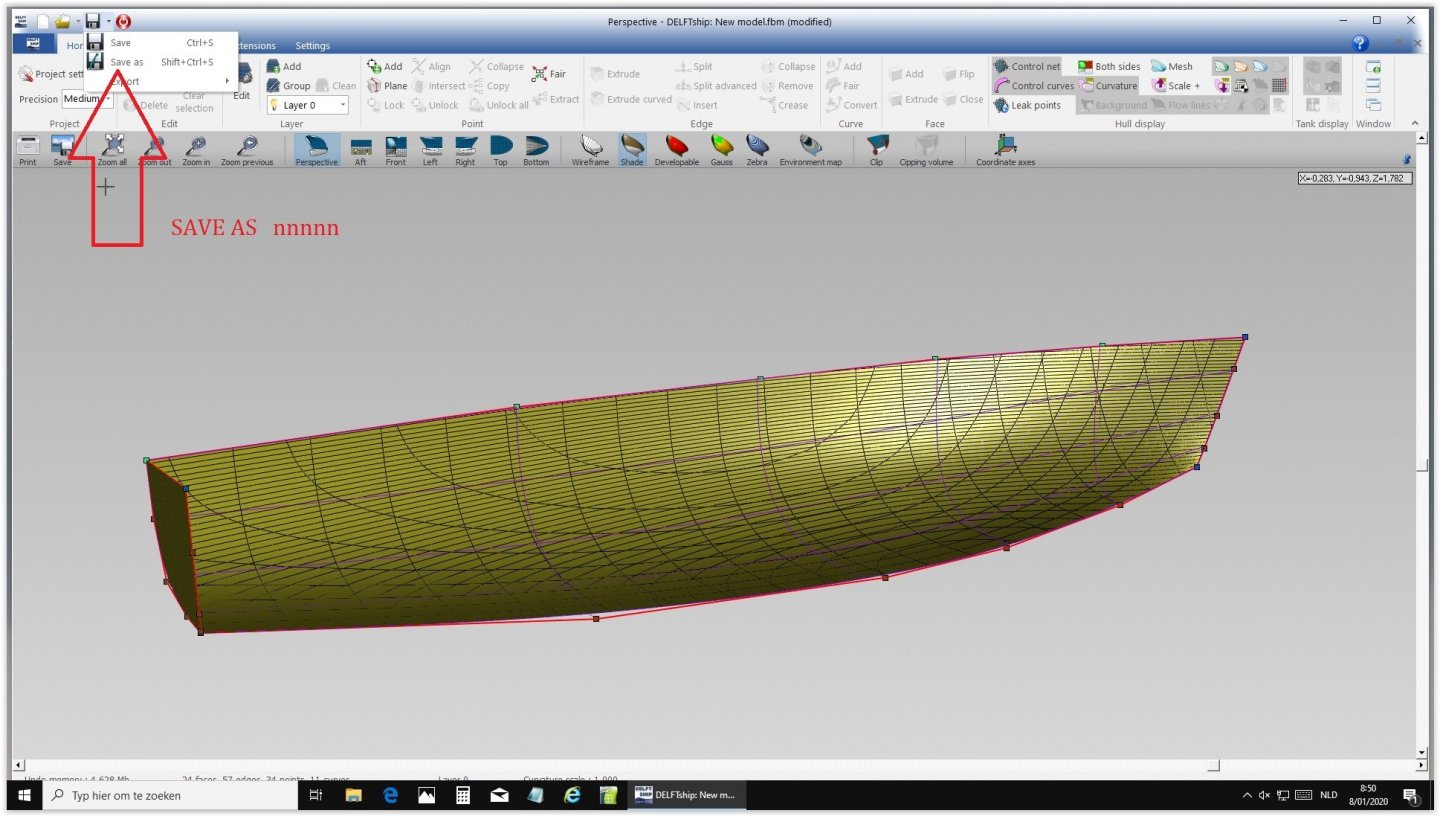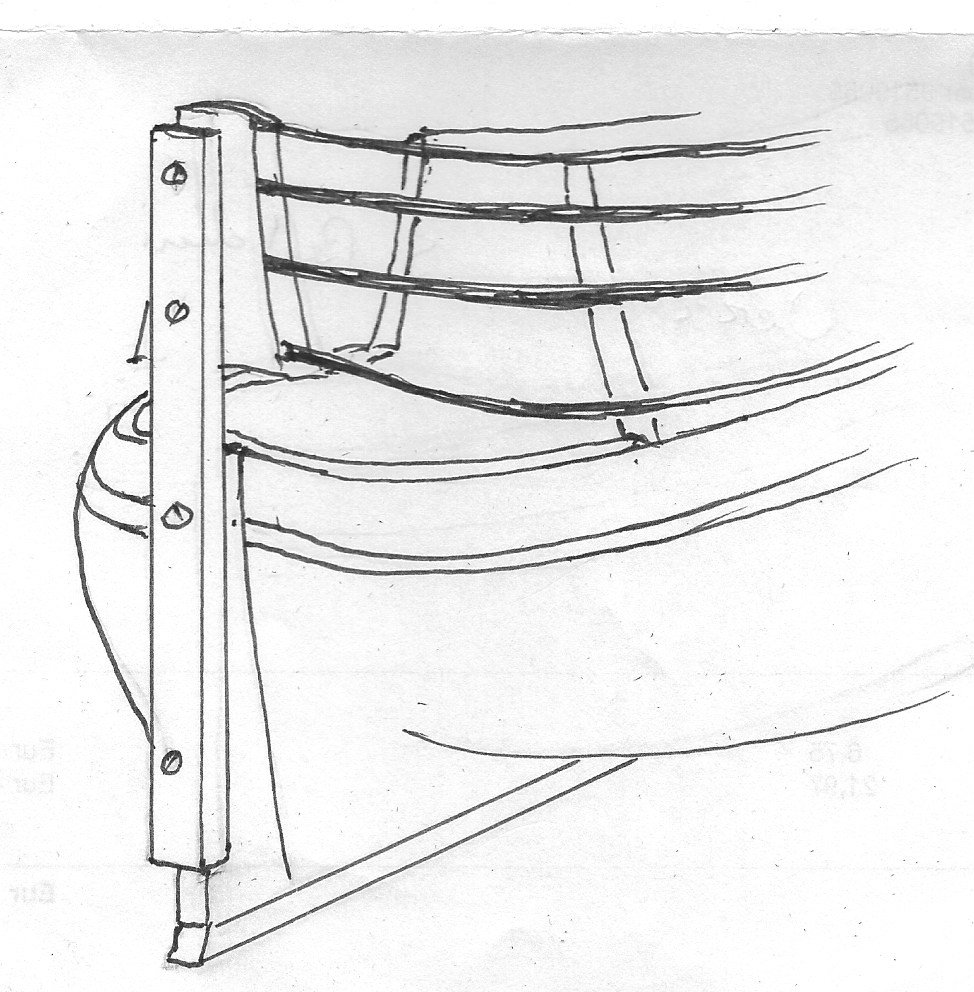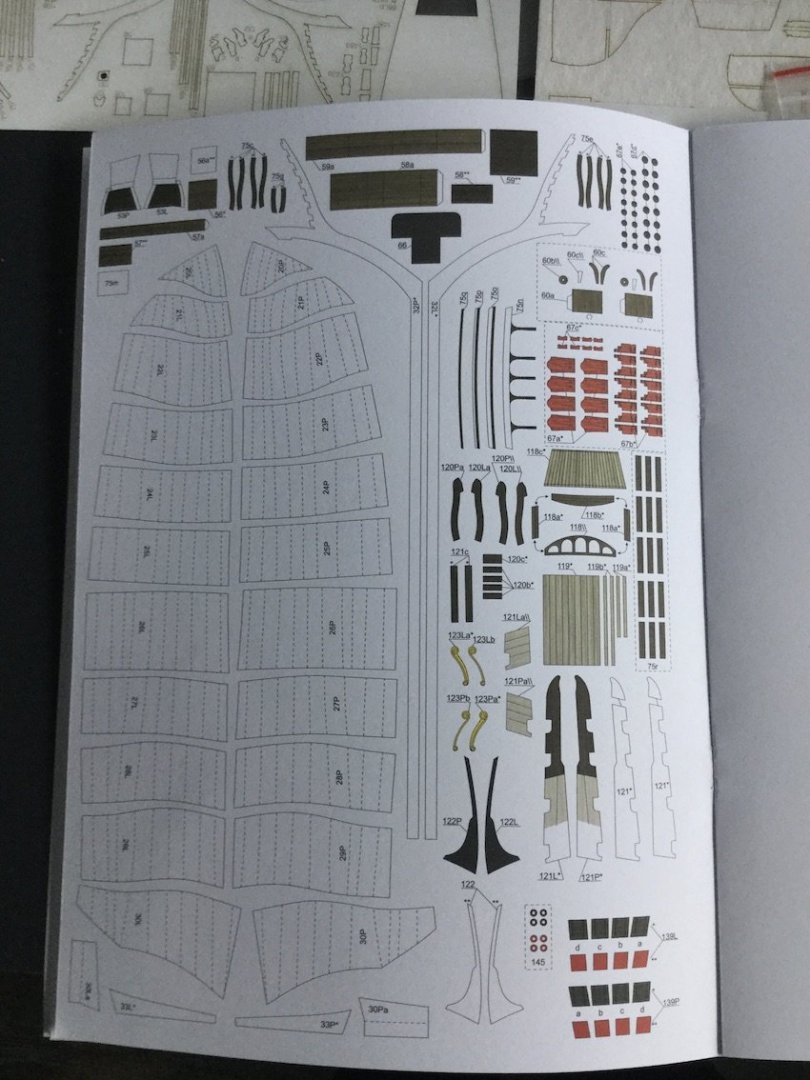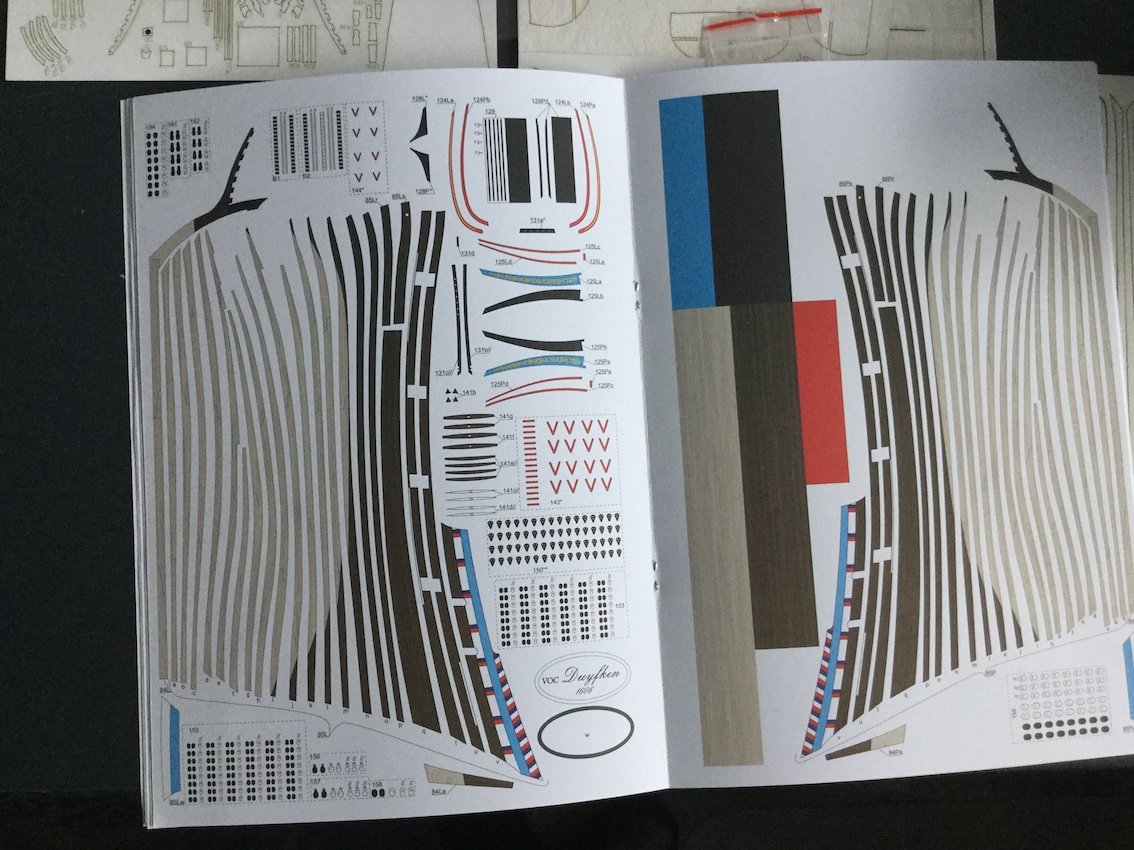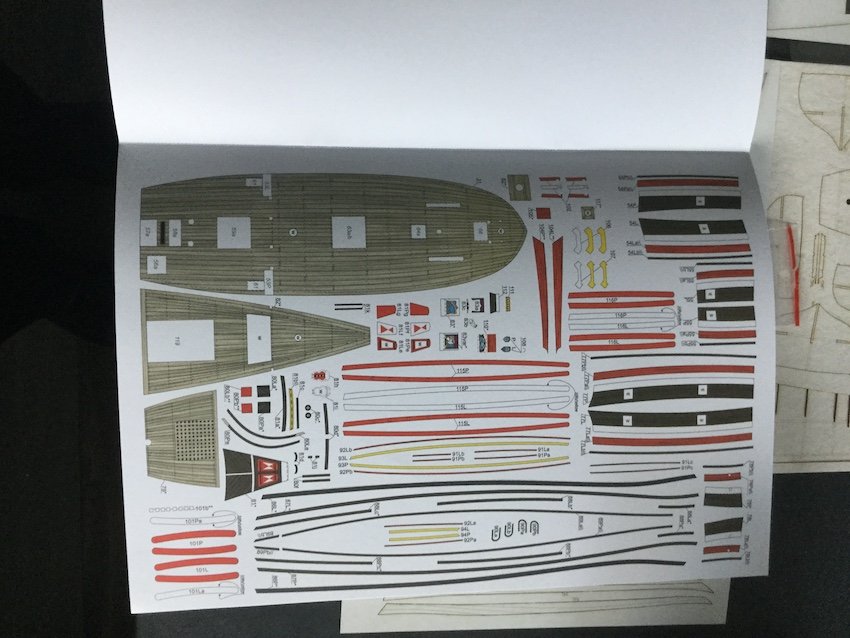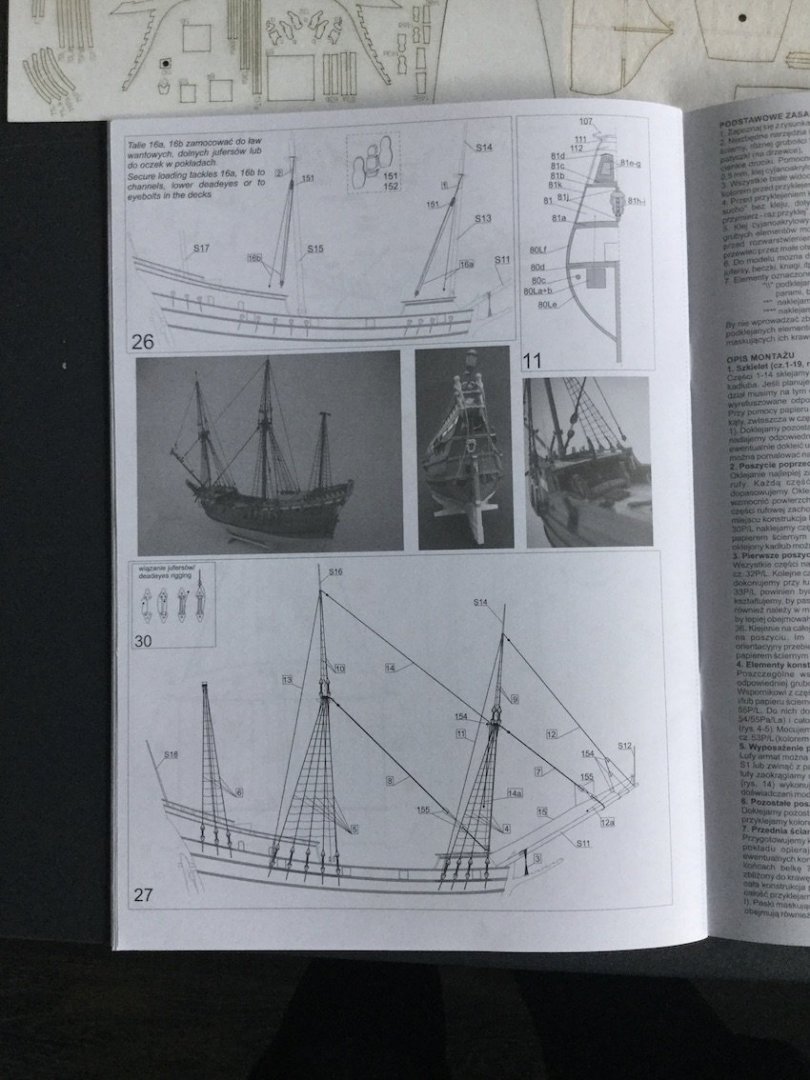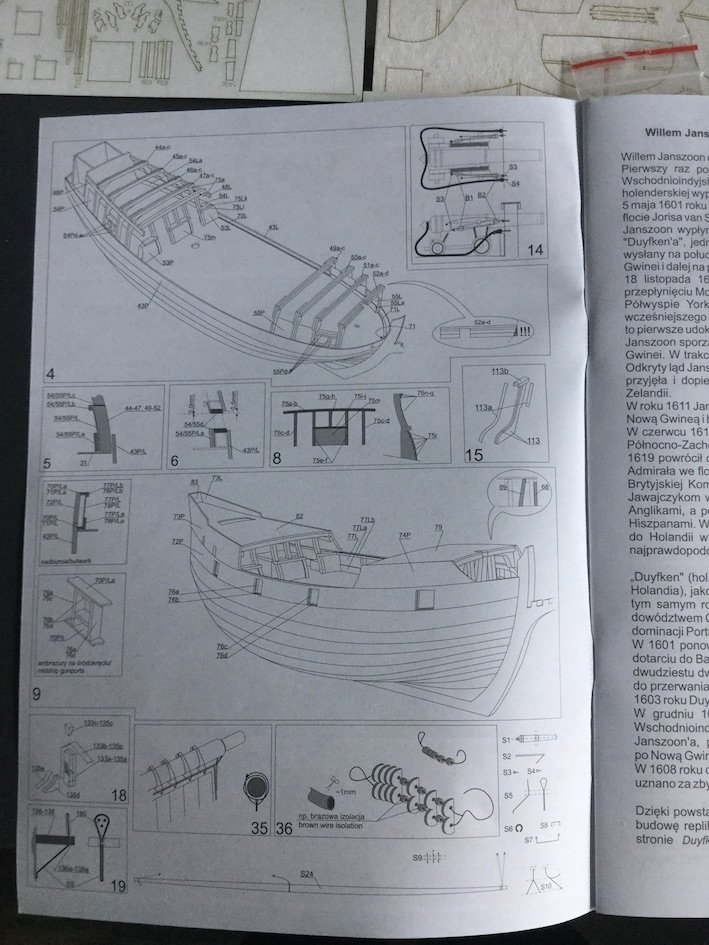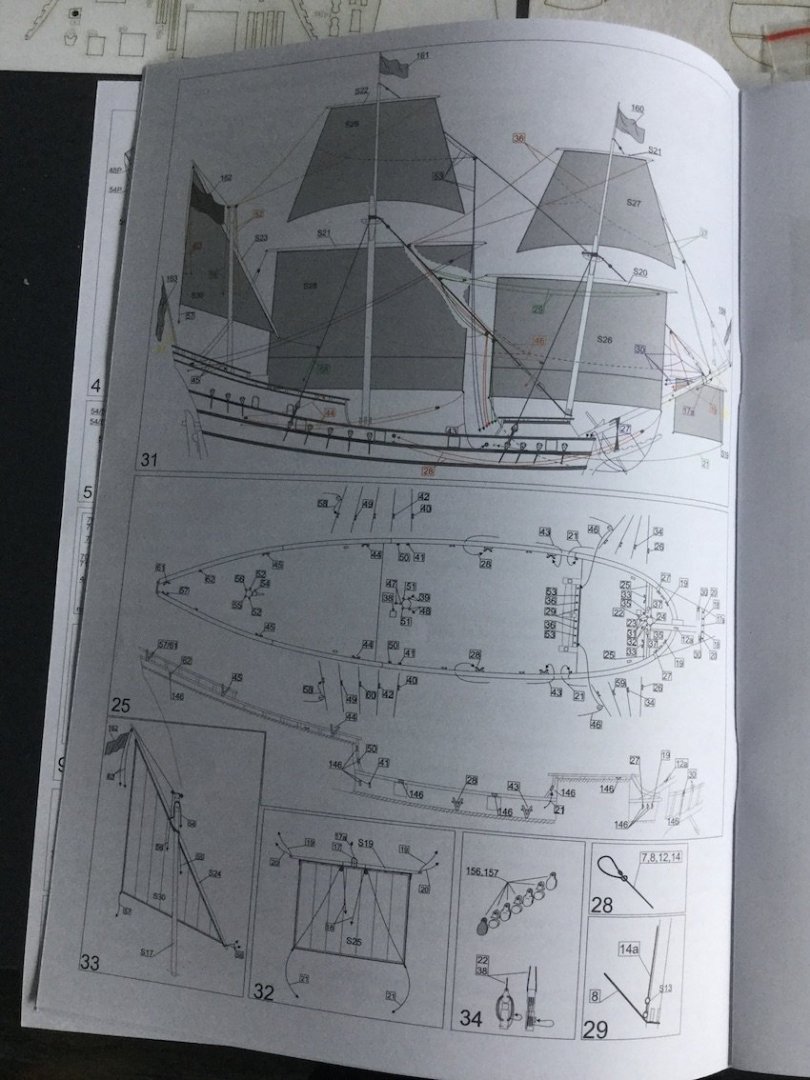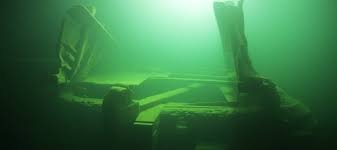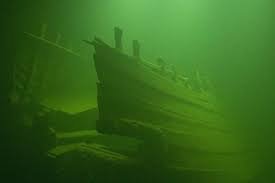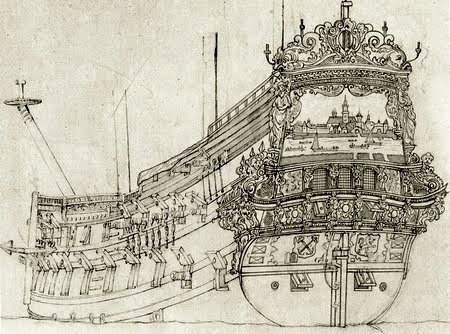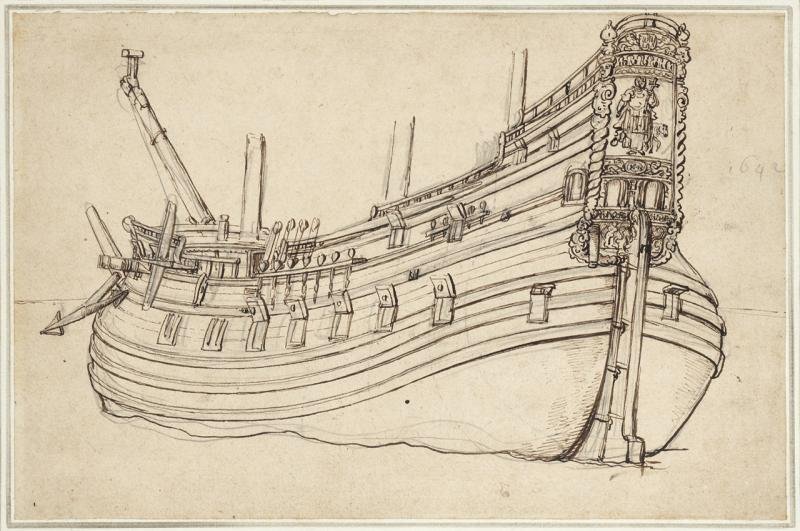-
Posts
662 -
Joined
-
Last visited
Content Type
Profiles
Forums
Gallery
Events
Everything posted by Ab Hoving
-

Need CAD type program
Ab Hoving replied to Sambini's topic in CAD and 3D Modelling/Drafting Plans with Software
Every part of the ship I showed was made with DELFTship. If you want to know how, I will have to ask Rene, but I think there is a function in the program that allows you to start with a choice of several shapes, after which they can be 'deformed' as you like. -
Congratulations Markus. This time it will work. The 'man' 🙂
- 332 replies
-
- fluit
- abel tasman
-
(and 1 more)
Tagged with:
-

Need CAD type program
Ab Hoving replied to Sambini's topic in CAD and 3D Modelling/Drafting Plans with Software
Import body plan. Choose Front Open edit background images Import body plan Match base and center line Alingn transom Match aft frames Align fore station lines repeat aft station lines, starting from the outside. Here is the new lines plan When we created the lines plan for the ship I showed on Januari 7 as an example of what Delftship was capable of, we worked solely from the specification contract in Witsen's book from 1671, so without a base lines plan. The contract specified eight frames with on every frame seven or eight positions. That was of course much more complicated than this example, but the program allows for such actions. Even with less stations DELFTship, being a ship design program, fairs the lines and completes the shape of the vessel. It takes a while to master it, but Rene even succeeded in shaping the carvings with this program: Also the entire interior of the ship was built, which allows other specialists to convert it into a program allowing visitors to explore the ship in and out. This will be published soon on an internet site, accessible for anyone who is interested. Thanks for your attention. -

Need CAD type program
Ab Hoving replied to Sambini's topic in CAD and 3D Modelling/Drafting Plans with Software
Here is how to insert the top view: Select 'top' in DELFTship. Then: 'edit background images'. Choose your top view and import it into DELFTship Click and hold top view and drag it until stern and centerline are equal to the DELFTship stern and centerline. Stretch it till they fit. Click and drag the DELFTship lines until they match with the new design, just like you did in the side view. Next time the body plan, but I think the system becomes clear now... -

Need CAD type program
Ab Hoving replied to Sambini's topic in CAD and 3D Modelling/Drafting Plans with Software
How to import the side view. Choose side view and edit background. Open import background image and select ZAZ and open. Click and hold to match the sterns Click and hold the right top of the yellow image and stretch until both hulls match. Check and double check. Do the same for the bottom until they match ate the bottom line. Click on the yellow part, which turns to white. Now click and hold several points on the DELFTship hull and drag them to the new shape until they match. Make sure that in the end the fat black lines match perfectly. This takes some experience. Now the outlines should be equal. Next time: same procedure in top view and body plan. -
Marcus, Why do your four forward frames curve inwards at the top?
- 332 replies
-
- fluit
- abel tasman
-
(and 1 more)
Tagged with:
-

Need CAD type program
Ab Hoving replied to Sambini's topic in CAD and 3D Modelling/Drafting Plans with Software
Before a lines plan can be inserted in DELFTship the elevation view, the top view and the body plan have to be separated. As an example Rene took a lines plan of a sloop he previously made in DELFTship. The shape differs from the default DELFTship hull. Next time he will bring it into the program and show how the shape can be adjusted. Here the newly made lines plan: Separated into an elevation view, a top view And a body plan. See you next time. -

Need CAD type program
Ab Hoving replied to Sambini's topic in CAD and 3D Modelling/Drafting Plans with Software
What we are doing here is all possible in the free version. The lines plan will follow soon. This is 'a 12 steps program' :-). It takes several steps to insert a lines plan, we'll do one after another. If there are any questions on our way there, just scream. The system differs a bit from other programs, which sometimes causes troubles with experienced users who worked with other systems, so stay close. -

Need CAD type program
Ab Hoving replied to Sambini's topic in CAD and 3D Modelling/Drafting Plans with Software
No, they are not from the free version, but as far as I know that makes no difference. I will ask Rene. (We both received a free professional version by the DELFTShip company after they found out what we did with their program) -

Need CAD type program
Ab Hoving replied to Sambini's topic in CAD and 3D Modelling/Drafting Plans with Software
Here is the procedure to insert a lines plan. We use a stern and 5 station frames. The fewer stations the better the fairing. So we will remove 20 frames and insert 5 new ones. The shell has 5 frames now. The points of the grid are on the skin only where there is a sharp bend. -

Need CAD type program
Ab Hoving replied to Sambini's topic in CAD and 3D Modelling/Drafting Plans with Software
Hereby the first suggestions by Rene: 1 By default DELFTShip offers a pattern for a classical type of yacht. The first challenge is to change that into the shape you want. Here the modified dimensions: Save as whatever you want. Here is the file:SLOEP.fbm Next time more. -
Excellent Marcus, you are on the right track now! Next be aware that your real planks should curve upwards to the stern to get the sheer you want. Always keep an eye on the lines....
- 332 replies
-
- fluit
- abel tasman
-
(and 1 more)
Tagged with:
-

Need CAD type program
Ab Hoving replied to Sambini's topic in CAD and 3D Modelling/Drafting Plans with Software
Hi Kris, Personally I am not a man with enough skills and knowledge to make you any wiser, but I work with my favorite - co-operator Rene Hendrickx. I asked him to make a sort of mini tutorial how to transfer a 2D lines plan into a 3D image with the help of DELFTship. I will post his contribution here as soon a possible. Hope it will bring you some new insights. Ab Oh, and eh... the ship I showed is a masterpiece indeed. We worked almost three years on it and it is now in the process of being worked around in a virtual world environment on an internet site, allowing you to walk around in the ship and extracting information from every constructional part of the vessel. 'Soon to be seen in this theatre...':-) -

Need CAD type program
Ab Hoving replied to Sambini's topic in CAD and 3D Modelling/Drafting Plans with Software
Ever heard of DELFTSHIP? Free downloadable ship design program. Only a few points at the surface of a hull are enough to get a perfectly designed hull. -
Call them what you want. You want to complete the missing parts of the top timbers and find their shapes. You can do that by making molds, for instance from card that you fit and adjust to the inside of the flexible battens until you have found the right shape of every missing part.
- 332 replies
-
- fluit
- abel tasman
-
(and 1 more)
Tagged with:
-
I'm sure this will work Marcus. For battens, use what is available, but don't make them too thin. They have to support your moulds for the top timbers and are not supposed to give way. Ab
- 332 replies
-
- fluit
- abel tasman
-
(and 1 more)
Tagged with:
-
Helo Marcus, I don't think this method will lead you to the desired result. The lines don't end in a sharp angle. May I suggest a different approach? Screw a firm batten to the back of the sternpost and attach a taffrail-shaped temporary mould to its front side. You can pick the shape from the draught. Then work with flexible battens of 4 x 4 mm following the sheer of the hull. Start them at least from the midship area and attach them to the taffrail mould. Make sure they follow a natural curve. If necessary help them a bit by shaping the battens. If all is set in a satisfactory way take the shape of your top timbers from the inside of the battens. Maybe this clumbsy sketch makes things a bit clearer.
- 332 replies
-
- fluit
- abel tasman
-
(and 1 more)
Tagged with:
-
I like kits, but I am basically a scratch builder and I especially distrust kits of Dutch old ships. This is caused by the fact that the Dutch never made as much good material available to model builders, like for instance the English did, mostly because the Dutch never made plans of their vessels. This results in kitmakers producing fundamentally wrong models. Making a card kit of a replica of an old Dutch ship is a smart solution. The research for the Duyfken was mostly done in the end of the 90s by Nick Birmingham in Fremantle, Western Australia, where the replica was built. I had the honor to be invited to visit the project as an advisor. I spent a wonderful week there. Eight days after my order the package with the kit was delivered from Poland, which is remarkably shorter than some years ago :-). It consisted of a 14 page booklet with 8 pages of parts and 6 of explanations, both in text (Polish and English) and very clear diagrams. Apart from the basic kit you can also order blocks, gun barrels and lasercut sheets (3). The whole package is very well produced with good printing and fine colors. I was especially interested in the inventive way Tomek Weremko, the driving force behind his new kit company Seahorse, does his planking. (see his threads her under 0Seahorse, like this one amongst others:) Paper kits usually have problems with producing fair lines, often caused by the ribs showing through the planking. We know from his postings, also at Papermodels.com that Tomek has a method of making beautifully fair hulls without any use of filler. He is demonstrating this technique in this kit, which will be an eye-opener for many of us. The scale is 1/100, which is very small and the builder ends up with a 31 centimeters long model, although the hull is only 25 centimeter. A real challenge for the miniature lovers to build this humble ship, which was the first vessel ever to map parts of North Western Australia early in the 17th century. I can strongly recommend it! Ab
-
Not very much. Of course there are vertical timbers connecting the planks and other timbers to which the planking of the taffrail is nailed. There must also have been small knees to connect side and stern and there were a few decks with their clamps and beams. All together they kept each other in place. I don't know if you have seen the pictures of the 'Ghost ship' in the Baltics. The one with the upwards staring knight heads. When the ship hit the seabed at 120 meters the mizzen mast fell backwards, destroying the whole after structure....except the sides. They still stand straight.
- 332 replies
-
- fluit
- abel tasman
-
(and 1 more)
Tagged with:
-
Patrick, do yourself a favor and throw that book into the dustbin. There is nothing in it that has any relationship with real Dutch ships. It was published way back in 1969 by a group of German people who had not the faintest idea what Dutch shipbuilding was all about. In those days it might have been worthwhile, but nowadays the best thing I can say about it is that it is hopelessly obsolete. And I am withholding myself. 🙂
- 332 replies
-
- fluit
- abel tasman
-
(and 1 more)
Tagged with:
-

Goldfinch by amateur - FINISHED - Scherft - 1:1 - CARD
Ab Hoving replied to amateur's topic in Non-ship/categorised builds
Try a plane by Halinski, for instance the Hurricane. Good chance that you get hooked. -

Goldfinch by amateur - FINISHED - Scherft - 1:1 - CARD
Ab Hoving replied to amateur's topic in Non-ship/categorised builds
Seems to me that you are a real convert when it comes to paper modeling.:-) -
No, I would not call it a structural member in a way that it supports or connects other parts, but it sure has more functions than a decorative one only. It covers the cross-cut ends of the planking, and it adds to a more structural look of the situation there. We see that in other places too, for instance in the elaborate stern and quarter gallery decoration of the big ships of the era. Here the large horizontal deviders are being supported by many carved figurines, giving much strength to the whole structure. But without all these decorations the ships are absolutely capable of doing what they were built for. Does that answer your question?
- 332 replies
-
- fluit
- abel tasman
-
(and 1 more)
Tagged with:
About us
Modelshipworld - Advancing Ship Modeling through Research
SSL Secured
Your security is important for us so this Website is SSL-Secured
NRG Mailing Address
Nautical Research Guild
237 South Lincoln Street
Westmont IL, 60559-1917
Model Ship World ® and the MSW logo are Registered Trademarks, and belong to the Nautical Research Guild (United States Patent and Trademark Office: No. 6,929,264 & No. 6,929,274, registered Dec. 20, 2022)
Helpful Links
About the NRG
If you enjoy building ship models that are historically accurate as well as beautiful, then The Nautical Research Guild (NRG) is just right for you.
The Guild is a non-profit educational organization whose mission is to “Advance Ship Modeling Through Research”. We provide support to our members in their efforts to raise the quality of their model ships.
The Nautical Research Guild has published our world-renowned quarterly magazine, The Nautical Research Journal, since 1955. The pages of the Journal are full of articles by accomplished ship modelers who show you how they create those exquisite details on their models, and by maritime historians who show you the correct details to build. The Journal is available in both print and digital editions. Go to the NRG web site (www.thenrg.org) to download a complimentary digital copy of the Journal. The NRG also publishes plan sets, books and compilations of back issues of the Journal and the former Ships in Scale and Model Ship Builder magazines.



